The pan-European magazine for the professional cleaning sector
SEPTEMBER 2024

CAREER PATHS


Equal
SMART BUILDINGS

The winners of the 2024 European Cleaning & Hygiene Awards will be revealed in Lisbon soonpage 3


The pan-European magazine for the professional cleaning sector
SEPTEMBER 2024



Equal

The winners of the 2024 European Cleaning & Hygiene Awards will be revealed in Lisbon soonpage 3

36 Winning the race to the future
Hartley Milner on how Europe is performing in the global race to the digital future.

03 News
08 Acceptance of technology
12 European reports

Criterion Publishing Ltd
Castle House, 89 High Street
Berkhamsted HP4 2DF, UK
T +44 (0)1494 791222
F +44 (0)1494 792223
info@europeancleaningjournal.com www. europeancleaningjournal.com
Subscriptions
UK - £60 / Continental Europe - £70 /
International - £80
16 Why use a dispenser?
How much value does a dispenser add when it comes to wipes and cloths?

20 The sky’s the limit
Cleaning offers career opportunities and progression for all.
22 End of the manual vacuum?
As the sector gets more automated, is there still a need for an operator?
26 Lead the charge
What is a ‘smart’ building and why is there growing interest in the concept?
33 Easing the strain
Why is the traditional cleaning methd of mopping still so widespread?
38 Could one size fit all?
Does it matter if there is a mismatch between products put into dispensers?
Editor Michelle Marshall
Features Writer Ann Laffeaty
Advertisement director
Chris Godman
Advertisement sales executive
Laura Bell
Circulation Marie Payne
Italy, Spain & Switzerland
Fabio Potesta
Mediapoint & Communications
Corte Lambruschini, Corso Buenos Aires, 8 V0 Piano, Interno 7 16129 Genova, Italy
T +39 010 570 4948
F +39 010 553 0088 info@mediapointsrl.it www. mediapointsrl.it
•Network with industry leaders and innovators from across China and beyond.
•Discover the latest technologies and strategies to tackle modern cleaning and hygiene challenges.
•Learn how businesses have successfully implemented advanced cleaning solutions and sustainable practices.
•Participate in discussions to influence future industry standards and regulations.



As ECJ goes to press, there are just over two weeks to go until the European Cleaning & Hygiene Awards 2024 gala dinner. We will soon be on our way to Lisbon, Portugal to celebrate with the finalists and crown our winners. Will you be joining us on October 3 for the biggest night of the year for our industry?
Even if you’re not a finalist, attending the event is a great opportunity to enjoy a fantastic night of networking, entertainment, team building and inspiring industry stories. It’s where we get to celebrate and champion the work of the most inspiring industry professionals in Europe.
The shortlist features over 50 of the cleaning sector’s most outstanding companies. Here are those finalists:
Best Use of Smart Solutions by Service Providers
• AZ Groeninge, Leviy and Alpheios
• Vebego Cleaning Service
• Climex
• JPC by Samsic
• Principle Cleaning Services
• OMNI Group
• Mitie
Investment in Training
• CleanEvent
• Breedweer Facilitaire Diensten
• Iberlim
• Markas
• Swiftclean
• Bidvest Noonan
Excellence in ClientContractor Partnerships
• The Mount Charles Group at Game of Thrones set tour
• Derrycourt Cleaning Specialists at the National Rehabilitation University Hospital
• CSU and Avans University of Applied Science
• JPC by Samsic at Regent’s Place
• Principle Cleaning Services at 22 Bishopsgate
Start-Up Business of the Year
• CLEANSERV
• Reliance
• Cliezen
Sustainability - Best Practice (Manufacturing)
• Tork, an Essity brand
• Satino, a WEPA
Professional brand
• Kimberly-Clark Professional
• Evans Vanodine International
• BioVate Hygienics
Sustainability - Best Practice (Service Provider)
• Chamberlaine Cleaning Services
• The Exclusive Services Group
• Derrycourt Cleaning Specialists
• Bidvest Noonan
• Principle Cleaning Services
• Cleanology
• Peartree Cleaning Services
Commitment to Diversity in the Workforce
• Breedweer Facilitaire Diensten
• Principle Cleaning Services
• Cleanology
Best Initiative Raising the Profile of the Cleaning Sector
• Lyreco UK & Ireland
• Breedweer Facilitaire Diensten
• Markas
Technological Innovation of the Year
• Nexaro for the NR1500
• Reliance for Leopole
• BioHygiene for the Biotech Water Soluble Paper Sachet
Leader of the Year
• Nick Winstone, BioVate Hygienics
• Barrie Torbett, No Going Back
• Diane van Dijk, CSU
• Julie Chen, The Cheeky Panda
Rising Star of the Year
• Bruno Alexandrino, Principle Cleaning Services
• Christopher Roden-Telford,
Alors que nous ne sommes qu’à quelques semaines des Prix européens de propreté et d’hygiène, qui seront décernés le 3 octobre à Lisbonne, il vous est encore possible de vous inscrire à cette manifestation.

•
The British Institute of Cleaning Science (BICSc)
• Corey Watts, CleanEvent Services
• Max Reames, Peartree
October 3
EuropeanCleaning&HygieneAwards Lisbon, Portugal www.echawards.com
October 16-18
Cleantex Africa Johannesburg, South Africa cleantex.co.za
November 18-21
ISSA North America Las Vegas, USA www.issa.com
December 11-13
Interclean China Shanghai, China www.intercleanshow.com/china
March 18-20 2025 The Cleaning Show London, UK cleaningshow.co.uk
March 25-27 2025 Europropre Paris, France www.europropre.com
Cleaning Services
• Sony Prajapati, Bidvest Noonan
• Sandra Jekabsone, Derrycourt Cleaning Specialists
Tickets to the event in Lisbon are still available - visit: www. echawards.com/attend
May 27-29 2025
ISSA Pulire Milan, Italy www.issapulire.com
September 23-26 2025 CMS Berlin Berlin, Germany www.cms-berlin.de
November 10-13 2025
ISSA North America Chicago, USA www.issa.com
April 14-17 2026
Interclean Amsterdam Amsterdam, Netherlands www.intercleanshow.com
October 19-22 2026
ISSA North America Las Vegas, USA www.issa.com
To have your event included in the Events section, contact ECJ via email at: michelle@europeancleaningjournal.com
Es sind nur noch wenige Wochen bis zum Galadinner der European Cleaning & Hygiene Awards 2024 in Lissabon am 3. Oktober, und dies ist Ihre letzte Gelegenheit, Ihr Ticket für die Veranstaltung zu buchen.
A poche settimane dalla cena di gala degli European Cleaning & Hygiene Awards 2024 che si terrà a Lisbona il 3 ottobre, questa è la vostra ultima opportunità per prenotare il biglietto per l’evento.
American people have changed their perceptions of public toilets following Covid, says the latest Bradley Corporation survey.
Around 80 per cent of respondents said they had become more conscious of germs as a result of the pandemic. Nearly 70 per cent said they now use a paper towel as a barrier between themselves and the toilet flush, taps and doors while 46 per cent use their foot to flush the loo.
“In the same way as the iPod forever changed music and 9/11 changed air travel, Covid will forever change public bathroom design,” said Bradley Corporation vice-president of business development and strategy Jon Dommisse. ”People want clean, well-stocked restrooms that they don’t have to touch.”
The study revealed that 86 per cent of people believe it is important to have touchless fixtures in a public washroom
while 70 per cent said they were more likely to return to a business that offered touchfree technology.
According to the study, 70 per cent of Americans have had an unpleasant experience in a washroom due to the poor condition of the facility. However, 43 per cent believe the overall condition of public toilets has improved over the past 15 years.
Used paper towels left on the floor and water splashed around the floor and the sink were among the top gripes mentioned in the study while others included clogged or unflushed toilets, a dirty appearance and unpleasant smells.
Almost 60 per cent of respondents said they believed an unclean washroom demonstrated poor management. And half of those questioned said they would think twice before returning to an establishment with a dirty loo.
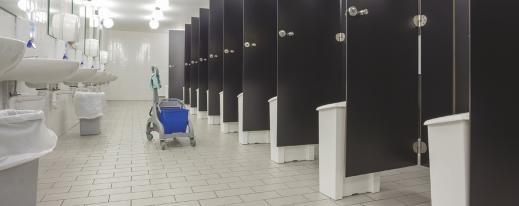
• La perception du public américain à l’égard des toilettes collectives a changé par suite du Covid, affirment les auteurs de la plus récente enquête de la Bradley Corporation.
• Sodexo UK & Ireland a été inscrite à la liste du quotidien The Times des 50 meilleurs employeurs en matière d’égalité de genre 2024.
Sodexo UK & Ireland has been listed as one of The Times Top 50 Employers for Gender Equality 2024 for its commitment to making gender equality a priority in the workplace.
This is the UK’s most highly profiled and well-established list of employers taking action as part of their business strategy.
Business in the Community (BITC) has been running The Times Top 50 for 14 years. The organisations featured have taken a proactive approach to stamp out inequalities in their workplaces by creating action plans to address disparities ranging from pay to progression.
Applicants were assessed on the work they do to remove gender inequalities in the workplace, including flexible working, family friendly policies, pay, reward and progression.
Sean Haley, CEO Sodexo UK & Ireland said: “Sodexo has always been a purposeful business, built on the principles of improving quality of life.
“To live up to our purpose, we must foster a diverse and gender-balanced workforce so that every one of our 30,000 colleagues in the UK and Ireland feels they belong to a team in which they can act with purpose
• Laut der neuesten Umfrage der Bradley Corporation haben die Amerikaner ihre Wahrnehmung von öffentlichen Toiletten im Gefolge der Covid-Pandemie geändert.
• Sodexo UK & Ireland wurde unter den Times Top 50 Employers for Gender Equality 2024 gelistet.
and thrive in their own way.
“At Sodexo we believe, when women reach their full potential, businesses and society are stronger and more successful, which is why we are committed to increasing the number of women in leadership roles and promoting equal access to career opportunities.
Meaningful change
“But creating an inclusive environment, requires meaningful change and I am proud of the work we have done and the investment we have made. We know there is always more progress to be made but inclusion in The Times and Business in the Community’s Top 50 for Gender Equality 2024, is testament to the fact we are moving in the right direction.”
In April 2023 Sodexo announced a suite of new enhanced benefits for eligible employees including enhanced and equalised maternity, adoption, and paternity paid leave benefits. These new enhanced benefits reinforce Sodexo’s ambition to offer a flexible first culture to help its employees, not just those with caring responsibilities, to balance work and personal commitments in a way that suits them.
• Gli americani hanno cambiato la loro percezione dei bagni pubblici dopo il Covid, secondo l’ultimo sondaggio della Bradley Corporation.
• Sodexo UK & Ireland è stata inserita dal Times tra i 50 migliori datori di lavoro per l’uguaglianza di genere nel 2024

In Spain, cleaning sector association ASPEL - which represents employers - is calling for flexibility in the implementation of the reduction in working hours announced by the Ministry of Labour.
Its president, Juan Ignacio Beltrán, commented: “It is crucial this measure be implemented when each current agreement expires in order for it not to have a very negative effect on the companies in the sector. The cleaning industry, where labour costs account for over 80 per cent of the total, is particularly sensitive to this measure.”
The objective of the Ministry of Labour is that the full-time working week shall become 38.5 hours this autumn, with a level of 37.5 hours being implemented by January 2025.
This working hours reduction
measure will especially impact the cleaning sector, and parttime workers in particular, as a consequence of the wage deficit the measure entails for that group.
ASPEL is asking that the reduction in working hours takes into account the transitional nature of the law’s application, adjusting it by waiting for the expiry of agreements in force or extending the time for its implementation.
‘Disastrous impact’
“Another mitigating measure against the disastrous impact would be for companies participating in public tenders, and thus contracting with the Administration, to be able to pass on the increased costs incurred,” added the ASPEL president.

Ignacio Beltrán emphasise “the fundamental role that social dialogue has had, continues to have, and we hope will continue to have, in particular collective bargaining, as a tool to achieve
agreements between unions and employers’ associations such as ASPEL and which transcend the changes that occur when there are changes in governments and parliamentary majorities.”

• En Espagne, l’association de la propreté ASPEL, qui représente le patronat, à lancé un appel à ce que l’on fasse preuve de souplesse dans l’application de la réduction des heures de travail annoncée par le gouvernement.
• Le réseau de distribution Jangro a lancé une nouvelle série de podcasts portant le nom de Keep It Clean.
Independent cleaning supplies distributor network Jangro has launched a new podcast series - Keep It Clean. With the first episode airing on September 18, the series aims to offer insights, expert interviews and analysis of cleaning sector issues including sustainability and legislation.
Hosted by the company’s national accounts manager
Kate Williamson, Keep It Clean features guests from the Cleaning & Support Services Association (CSSA), Planet Mark, and the Human Trafficking Foundation, amongst others. Valuable insights
Jangro CEO Jo Gilliard said: “We are thrilled to launch ‘Keep It Clean,’ which is designed to serve industry decision-makers across
• In Spanien fordert der Verband der Reinigungsbranche ASPEL, der die Arbeitgeber vertritt, Flexibilität bei der Umsetzung der von der Regierung angekündigten Arbeitszeitverkürzung.
• Das Vertriebsnetzwerk Jangro hat eine neue Podcast-Serie namens Keep It Clean vorgestellt.
various sectors that contract or employ cleaning teams and suppliers.
“This podcast aims to share valuable insights and keep listeners updated with the latest trends and developments, ensuring that businesses can make informed decisions. Our goal is to create a resource that is both informative and engaging communicating detailed benefits, support, advice, and knowledge from within the industry for businesses seeking guidance and a trusted partner.”
Keep It Clean will be available on all major podcast platforms and new episodes will be released bi-weekly. Visit www. jangro.net/keepitclean to find out more
• In Spagna l’associazione del settore delle pulizie ASPEL - che rappresenta i datori di lavoro - chiede flessibilità nell’attuazione della riduzione dell’orario di lavoro annunciata dal governo.
• La rete di distributori Jangro ha lanciato una nuova serie di podcast intitolata Keep It Clean.
BOMA Group, the Belgiumbased professional cleaning and hygiene products producer and distributor, has entered an agreement with private equity firm IK Partners. The IK X Fund will invest in the business and partner with the existing management team, who will retain a significant stake.
Operating throughout the Benelux and France since 1974, the company sells through its own brands BOMA and Greenspeed. Under the leadership of owners Luc Bresseleers and Stijn Wildiers, the company has also expanded geographically and made several acquisitions. Now the plan is to explore further acquisitions and

strengthen its position in Europe.
Luc Bresseleers, co-owner and chief executive officer of BOMA Group said: “We look forward to working closely with the team at IK to ensure that BOMA strengthens its position as a market leader in the professional
BOMA Group a conclu un accord avec IK Partners, une société d’investissement privé britannique, prévoyant que celle-ci investisse dans BOMA et collabore avec son équipe dirigeante existante.
cleaning sector on a European scale. We are confident that together we can ensure further growth and strategic expansion for the benefit of our customers and stakeholders.”
Stijn Wildiers, co-owner and chief human resources officer
Die BOMA Group hat eine Vereinbarung mit dem Private-Equity-Unternehmen IK Partners geschlossen, wonach diese in das Geschäft investieren und mit dem bestehenden ManagementTeam zusammenarbeiten wird.

added: “We would like to thank all our employees, existing shareholders and customers for their trust. This year marks 50 years! We are excited about working with IK and look forward to accelerating the next phase of our strategy.”
Frederik Jacobs, partner at IK and advisor to the IK X Fund concluded: “Under the leadership of Luc, Stijn and their team, BOMA has established itself as a market leader in the development and distribution of cleaning products and machines in some European countries. We look forward to using our experience to help the company with further internationalisation and operational initiatives.”
BOMA Group ha stipulato un accordo con la società di private equity IK Partners in base al quale investirà nell’attività e collaborerà con il team di gestione esistente.
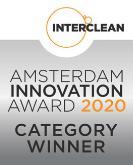




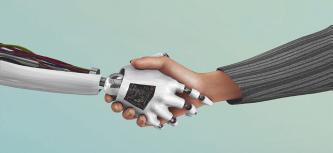
Mark Bergfeld at UNI Europa, believes the viability of the widespread adoption of AI, robotics and other technologies in the cleaning sector depends on their ability to support the existing workforce in engaging in higher value-added tasks and addressing power imbalances equitably.
Back in 2019 I visited a cleaning company’s headquarters where I was welcomed by a robot who was supposed to recognise my name and print out a badge for me. Several failed attempts later, two employees switched the robot off, and a receptionist inserted my name manually into their system.
Last summer, I encountered an automated cleaning robot at an airport. Children and passersby continuously got in its way preventing it from cleaning. Again, two employees came to take it away.
Against the backdrop of these experiences, recent industry discussions on ‘predictive maintenance’ ‘data-driven cleaning’, robotics, Artificial Intelligence and the Internet of Things raise questions regarding the viability and social acceptance of the latest technologies.
The viability of technology
There are three dimensions to consider in this discussion on viability: the technical, the financial and the human one.
Contract cleaning remains a labour-intensive sector with labour costs amounting to 80 per cent of turnover.
While it is technically viable to clean large surface areas such as airports, train stations, supermarket aisles, and large hallways with automated cleaning robots, workers are
still needed to programme them, pre-drive the routes and even empty the water.
Most of the employment in the industrial cleaning sector is concentrated in offices. Tasks like cleaning of lavatories, beneath seats and emptying rubbish are among the most time-consuming for cleaners. Thus, it is doubtful whether the use of technologies can unleash new economies of scale and solve the productivity puzzle.
No silver bullet
Consultants hail that generative AI and the Internet of Things, with sensors installed in door frames, wastepaper baskets and beneath tables, as facilitating “precision in cleaning schedules”. Yet, precision in cleaning schedules, predictive maintenance and data-driven cleaning are no silver bullet to tackle the labour shortages plaguing the cleaning sector.
In sectors such as cleaning, characterised by strong power imbalances between management and workers, the use of technology will ultimately intensify their work schedule, or what is commonly referred to as the employee utilisation rate. This only feeds into the “vicious cycle of labour turnover and labour shortages”, which our EUfunded RETAIN Project revealed. Thus, the viability of the widespread adoption of technologies in the cleaning sector depends on its ability to support the existing workforce in engaging in higher valueadded tasks and addressing power imbalances equitably.
De l’avis de Mark Bergfeld, qui travaille chez UNI Europa, la viabilité d’une adoption élargie de l’IA, de la robotique et des autres technologies au sein du secteur de la propreté dépendra de la mesure dans laquelle ces innovations encourageront les nettoyeurs à entreprendre des tâches de plus haute valeur ajoutée, et permettront d’aplanir les déséquilibres du pouvoir.
Therefore, it would be foolish to dismiss the use of technologies outright. Artificial intelligence, robots and co-bots could be used to do high-risk work, repetitive tasks and ultimately decrease cleaners’ workloads. As one industry article points out: “The robotic cleaners handle routine work, freeing up cleaning staff for more high-priority, complex tasks.”
If cleaning companies can help workers to move up in the value chain to create a higher capitallabour ratio, new opportunities for cleaners would emerge. After all, occupations with a higher ratio are often more highly remunerated and enjoy higher social recognition. This would also address cleaners’ fears of robots and AI taking their jobs.
In a recent ECJ article AI - should cleaners be worried? John Griep of VSR in the Netherlands argues that the idea that AI will replace cleaners is illusory. That is because only five per cent of industrial machines and/or robots incorporate AI.
Social acceptance low Moreover, these technologies will only become widely adopted in the cleaning sector once other industrial sectors that cleaning companies service have paved the way. This broader diffusion is a necessary precondition to social acceptance.
However, social acceptance of Artificial Intelligence remains low. According to EU-OSHA, only 27 per cent of workers think AI influences the pace and processes of their work and nearly half of the respondents (47 per cent) feel that it increases surveillance.
Thus, the golden path to the social acceptance of new
Mark Bergfeld (UNI Europa) ist der Ansicht, dass die weitverbreitete Einführung von KI, Robotik und anderen Technologien in der Reinigungsbranche davon abhängt, ob sie die vorhandenen Arbeitskräfte bei Aufgaben mit höherer Wertschöpfung unterstützen und Machtungleichgewichte fair beheben können.
technologies involves making cleaners’ jobs easier and more enjoyable, reducing MSDs and increasing workers’ autonomy. This would also reduce absentee rates and labour turnover and increase productivity.
New technologies in the world of work are always a double-edged sword: they can either be used to upskill or de-skill, increase autonomy or increase surveillance, improve social recognition or erode professional standards.
For cleaning companies, the main competitive advantage is their staff. Hence, the critical question is whether they will use technology to empower their workers. This empowerment is not achieved through onboarding videos, pep talks, and employee surveys.
Instead, it requires union involvement more than ever.
In the past and present, unions have ensured that technological change is fair and that productivity gains are shared, while upholding professional standards. In sectors plagued by high labour turnover, unions have acted as stewards of stability.
That is why the EU social partners EFCI and UNI Europa already signed a joint statement back in 2019. Its call to use the advent of new technologies to improve working conditions through collective bargaining and social dialogue remains as important as ever.
With labour shortages and turnover threatening the sustainability of the sector, unions are more essential than ever. They can help cleaning companies harness new technologies effectively and build social acceptance. The workers in the sector need it now more than ever.
Mark Bergfeld di UNI Europa ritiene che la fattibilità dell’adozione diffusa dell’intelligenza artificiale, della robotica e di altre tecnologie nel settore della pulizia dipenda dalla loro capacità di supportare la forza lavoro esistente nell’impegnarsi in compiti a maggior valore aggiunto e nell’affrontare equamente gli squilibri di potere.
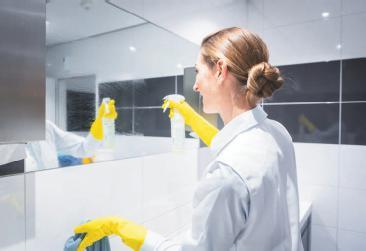
Facilities are looking for more sustainable ways to elevate their spaces, which is why we have made enhancements to Vibe Pro® and V-Air® Solid Evolution.



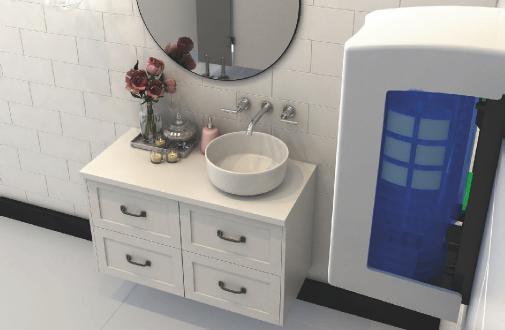






In the UK, The Living Wage Foundation has published a new toolkit designed to help employers within the service provision industry to join the Living Wage network.
The real Living Wage is the only UK wage rate based on the cost of living, and is currently £13.15 per hour in London, and £12 per hour in the rest of the UK. For a full-time worker, the difference with the National Living Wage equates to just over £1,000 a year, going up to more than £3,000 a year for those based in London.
Service providers can be part of the network through either accrediting as a Living Wage Employer or signing up to the Recognised Service Provider scheme. Living Wage Employers commit to paying all members of staff at least the Living Wage, whilst Recognised Service Providers agree to pay all staff not tied to client contracts at least the Living Wage and promote the Living Wage to their clients.
The toolkit offers context around the Living Wage, both generally and within the service provision industry, including the benefits of the Living Wage to both employers and employees. It goes through the accreditation process with case studies from businesses who have already
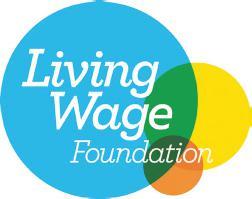
signed up, and answers some frequently asked questions. Finally, it highlights some further opportunities for working with the Living Wage Foundation to champion fair pay and good employment practices.
Accredited cleaning firms
The Living Wage campaign began with cleaners organising and campaigning for fair pay at some of London’s major financial institutions, and cleaning remains a focus for the Living Wage Foundation. More than 200 UK cleaning companies are accredited Living Wage Employers.
Fin Watkinson, campaigns and partnerships manager at the Living Wage Foundation said: “We are incredibly grateful to the hundreds of employers within the cleaning industry who are showing fantastic leadership in promoting the Living Wage, and this toolkit attempts to celebrate some of those, whilst
helping and encouraging others to sign up.”
Dominic Ponniah, CEO and co-founder of Cleanology, who co-chairs the Living Wage Foundation’s Recognised Service Provider Leadership Group added: “I continue to be heartened by the ongoing support of our clients and the wider industry of the Real Living Wage. In this current cost of living crisis it has never been more important to support the Real Living Wage but moreover, it is simply the right thing to do. It is also a sound commercial business decision, because you get a more motivated team who want to go over and above for you and your clients.”
“Paying the Real Living Wage is absolutely vital for employee wellbeing, ensuring fair pay and reducing home life and financial stress,” concluded Phil Smith, managing director of Indigo Integrated FM and co-chair of the Living Wage Foundation’s Recognised Service Provider Leadership Group. “However, in the outsourced FM industry, it’s also business-critical, as these essential workers keep schools, hospitals and myriad other commercial environments operational.”
Visit: livingwage.org.uk/livingwage-service-provision-toolkit to find out more.
UK-based cleaning machinery producer Truvox International has refreshed its brand, launched a new website and opened a new showroom and training centre.
“We’re excited to show Truvox evolving - our new logo, our new branding and now our new website repositions us a global floorcare solutions business,” says executive director
• Au Royaume-Uni, la fondation Living Wage (salaire décent) a publié un manuel visant à aider les prestataires de service à adhérer au réseau Living Wage.
• Truvox International a rafraichi son image de marque, lancé un nouveau site Internet et ouvert un nouveau salon de vente et un centre de formation.
Gordon McVean.
“The website allows customers to discover our latest products, easily compare machines, watch videos and access supporting documents. The website is also available in different languages, including French, German, Spanish and Dutch to support our international customers and markets.
• Die Living Wage Foundation (Existenzminimum-Stiftung) im Vereinigten Königreich hat ein neues Toolkit veröffentlicht, das Dienstleistungsanbietern beim Beitritt zum Living Wage Network helfen soll.
• Truvox International hat seine Marke aufgefrischt, eine neue Website vorgestellt sowie einen neuen Showroom und ein neues Schulungszentrum eröffnet.
“Meanwhile, the new showroom and training centre provides the opportunity for us to show our full range of floorcare solutions and provide machine training for customers and staff,” continued McVean. “It features a variety of flooring types so that we can demonstrate each machine’s effectiveness and ease of use.”
• La Living Wage Foundation nel Regno Unito ha pubblicato un nuovo toolkit per aiutare i fornitori di servizi ad aderire alla rete Living Wage.
• Truvox International ha rinnovato il proprio marchio, lanciato un nuovo sito Web e aperto un nuovo showroom e centro di formazione.
October 3, 2024
The gala dinner and awards ceremony takes place at Sud Lisboa in Lisbon




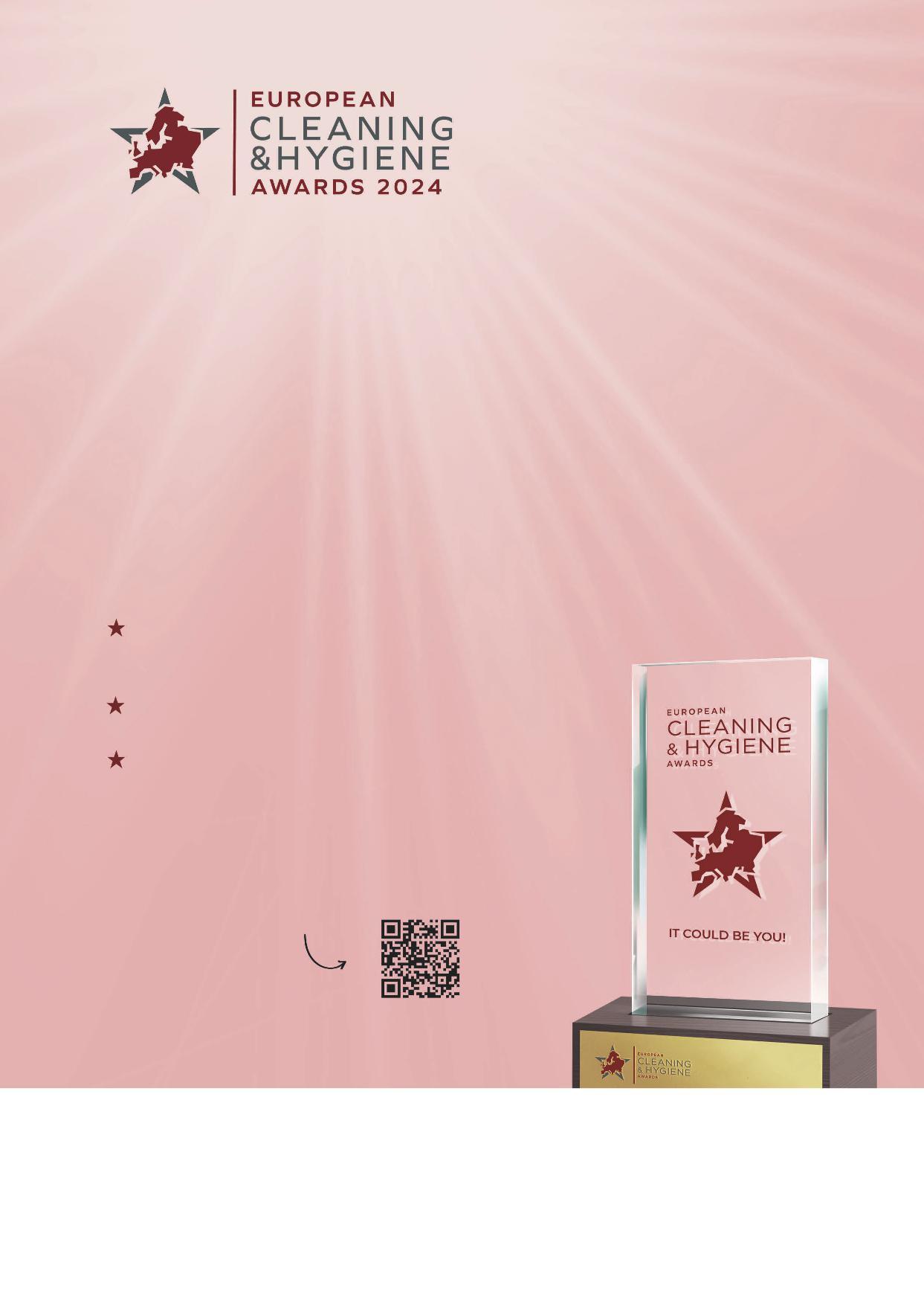
Christian Bouzols from France on a company that specialises in dealing with human deaths.
There’s hardly any area of human activity in which cleaning is not involved. This includes some difficult work. Groupe NAD, created in Alsace in 2017, specialises in cleaning work following the death of people. The company gets called to deal with all sorts of situations, some of which are post-mortem interventions (cleaning-up following the late discoveries of dead bodies), deployment after suicides and crime scene restoration work. It’s an industrial niche in which very few companies are to be found in France. NAD now covers the whole of the country. Its founder Julien Martel needed three years of research and development work to create his enterprise. Its mission: the total elimination of all the bodily fluids of the deceased and the eradication of all the viruses and bacteria that have developed around the body. The company now employs six people and is called to some 100 to 200 death scenes a year, usually responding to private requests. Less frequently it is called in by courts of law to clean up death scenes that have been sealed off for the duration of the inquest. It’s an activity which is not much talked about in France.
While the cleaning up of crime and death scenes is an established and regulated activity in some countries, this is not the case in France. And this is why Julien Martel decided to get involved. “I was working for a firm of funeral services and realised that there were no specialised firms in France that could handle the work of cleaning-up in death situations. That kind of work was done by general cleaning companies carrying out disinfestation and industrial cleaning work. I then realised there could be an opening for a
Dans son reportage de la France, Christian Bouzols parle d’une société spécialisée dans le nettoyage de lieux de décès.
specialist contractor.”
The problem was that cleaning up after death requires skills and knowledge for which no training existed in France. “So I had to start by doing my own experiments in my own garage, using pig’s blood and pig’s flesh,” recalls Julien Martel. He then launched into the study of chemistry and microbiology “in order to understand the behaviour of bacteria and the interactions between chemical products”. Studying online, Martel also obtained certifications from US institutions. However he insists, “what really matters in this trade, you’ll need to learn in the field.”
Funding challenge
Another hurdle to overcome was the matter of funding, which was most difficult to obtain. “I started with €10 in my pockets. The banks just refused to back my project. The only institution prepared to invest in me was the ADIE (Association pour le droit à l’Initiative Economique) which lent me €10,000 for my startup equipment.”
Reinvesting every euro of profit, Martel managed to buy everything required for his business, namely three lorries and €75,000 worth of equipment and materials. It also enabled him to hire his first employees. Recruitment isn’t easy. This type of activity can disturb some people and therefore requires that candidates submit to a psychological test before being hired. Martel says the job is not for the faint-hearted and people need to keep a cool head. So his workers never come alone, but always in pairs, to crime and death scenes. It’s therefore quite an unusual job, both technically and emotionally, but the company is doing well and continuing to grow.
Christian Bouzols aus Frankreich berichtet über eine Reinigungsfirma, die auf die Reinigung nach Todesfällen spezialisiert ist.
Lynn Webster looks at the impact on the industry of the new government in the UK.
As the dust settles following the summer general election and a new government in the UK, we are now beginning to see some of the inevitable changes, the priorities and thought processes of the leading party. Whilst remaining apolitical on viewing these changes there are certainly going to be some major impacts on companies in the cleaning industry.
In his speech to Parliament, the King said: “My government is committed to making work pay and will legislate to introduce a new deal for working people to ban exploitative practices and enhance employment rights”
Potentially significant are the changes in power and control between employers and their employees. These are expected to be presented as The New Deal package of employment reform by midOctober. Over recent decades employers have had a number of legislative ‘benefits’ which could be removed.
This will include significant change in the grace period when recruiting new employees without facing unfair dismissal claims. This has previously been six months, one year and since 2012 two years - that will now revert to ‘from the first day of employment’. It is likely to be a major concern to employers and their HR advisors. It may include onerous time spent in consultation processes; formal performance reviews which will occur from the first day in a job; increase in operational management time; consuming paperwork; the need for greater HR expertise; and potential legal costs when new cases are taken to tribunal hearings.
There are also changes in
removal of zero hour contracts; increases in administration time to manage rights for various benefits such as sick pay; maternity and paternity pay; and flexible working being accommodated by employers. All from day one.
There are of course the values to employees which are not in dispute - especially the social aspects that reduce the risks of employees being dismissed without fair cause. And there will be improved workplace standards for many, but perhaps at a cost that many smaller businesses can ill afford. HR expertise and the management of staff can be a significant weakness in SME’s.
This could mean employers are less likely to take on those workers who take longer to become productive if there is less flexibility in having to retain the less suitable or able candidates. This in turn may mean reduced opportunities for job seekers when employers won’t take risks on a new employee or give them a chance to prove themselves. After all, who is truly able to assess the full capability, competence, attitude and behaviours of new recruits on day one? It may alter the way companies recruit - make them less likely to give someone a chance. Where there are doubts about suitability, some won’t be employed in future.
The government has promised to consult and canvass views.
“It is crucial we get the balance right,” the Department for Business and Trade has said, “… we will consult fully with business.”
There’s no doubt - this could be the biggest change in UK Employment Law in over 20 years.
Dalla Francia, Christian Bouzols racconta di un’impresa di pulizie specializzata nella pulizia in seguito a un decesso.
La situation politique britannique s’étant stabilisée par suite de l’entrée en fonction d’un nouveau gouvernement, Lynn Webster pense aux effets possibles de ce changement sur le secteur de la propreté. Während sich die Aufregung im Vereinigten Königreich legt, nachdem nun eine neue Regierung an der Macht ist, wirft Lynn Webster einen Blick darauf, wie sich diese Veränderung auf die Reinigungsbranche auswirken wird.
Ora che nel Regno Unito si è insediato un nuovo governo al potere, Lynn Webster dà uno sguardo all’impatto del cambiamento sul settore delle pulizie.
Dutch reporter John Griep at VSR on the impact of cleaning measurements on all stakeholders.
Our latest VSR webinar, The Cleaning Industry Widely Measured, focused on the effects of various measurement methods in the cleaning industry on cleaners, end users and clients. Hosted by Diane van Dijk VSR chairman, the event featured discussions with three key guests: Bert van Boggelen (chairman of Code Schoonmaak), Teddy van der Meij (policy officer at Arbo RAS), and Dirk van Hedel (business performance manager at GOM). Through a series of diverse themes and statements, our three panellists engaged in lively discussions and interacted with participants via the chat. The session, moderated by VSR board member Rita Brouwer, had three main themes: The impact of Smart measurements: The discussion began with an exploration of technical measurements like the VSR-DKS and VSR-KMS, which cleaners undergo 10 to 20 times a year. The first point addressed was whether cleaner satisfaction should be prioritised to improve cleaning quality. The panel agreed, emphasising that focusing on cleaner wellbeing leads to better service outcomes. The RAS workload meter was highlighted as a tool to identify and reduce factors contributing to high workload, thereby enhancing job satisfaction. Addressing workload and cleaner wellbeing: The second theme focused on the relationship between workload and cleaner wellbeing. The panel quickly rejected the idea that solving labour market shortages would resolve workload issues, instead advocating for listening to cleaners’ suggestions to improve efficiency and reduce the need for additional staff. A poll revealed 71 per cent of online participants believed
Rapportant des Pays-Bas, John Griep, de l’organisation VSR, contemple les effets des techniques de mesure du nettoyage sur les agents de nettoyage, utilisateurs et clients.
excessive measurement could negatively affect employee wellbeing. This suggests that while measurements are intended to ensure high standards and efficiency, they can inadvertently lead to stress and dissatisfaction among employees if not managed carefully.
The key issue isn’t just the frequency of measurements, but how they are implemented. If the process is perceived as rigid, punitive or purely focused on identifying faults rather than offering constructive feedback, it can create a negative work environment. Employees may feel under constant scrutiny - leading to anxiety, reduced morale and a decline in job satisfaction and performance.
Balancing technical quality and user experience: The final theme discussed the balance between technical cleaning quality and user experience. The panel agreed that while technical quality is important, it must be complemented by a positive user experience, which is also influenced by certain environmental factors (for example, an office space with deferred maintenance) and cleaner satisfaction. A suggestion was made to integrate technical quality and user experience measurements more closely, while also considering the impact of environmental factors.
Diane van Dijk concluded the webinar by advocating for fewer measurements and more emphasis on cleaner wellbeing. She stressed the importance of maintaining open communication among all stakeholders, with a focus on the happiness and satisfaction of cleaning staff, to achieve a balanced approach to both technical and experiential quality in professional cleaning services.
John Griep (VSR) berichtet aus den Niederlanden über die Auswirkungen, die die Bewertungen von Reinigungsarbeiten auf Reinigungskräfte, Endnutzer und Kunden haben.
ECJ’s Lotte Printz reports from Denmark where tourists are being offered perks to clean the capital.
If you happened to visit Copenhagen this summer for your holiday, you may have taken home a rather unusual souvenir: a greener mindset.
At least that’s what the local tourist board Wonderful Copenhagen hoped for. While other cities around Europe have told visitors to stay away this summer and local protesters even squirted tourists with water from water pistols, Wonderful Copenhagen has taken a different approach. Welcoming tourists, but also inviting them to help clean the streets, beaches and waterways of the Danish capital, to lessen the impact of their own tourism.
The overall incentive of the initiative, named CopenPay, should be to do good for the climate. But tourists participating would also be rewarded, i.e. green actions would be transformed into currency for cultural experiences making it more affordable to stay in the Danish capital - one of the most expensive cities in the world.
Twenty-four tourist attractions signed up for the scheme. So if you booked a windsurfing class, for example and spent an extra 30 minutes, before or after attending the course, on a beach clean-up, you would get a free lunch. Travellers were also encouraged to bike, walk or use the metro to get to the harbour boats where they would get a free one-hour social cruise and enjoy the company and beautiful surroundings while picking up waste from the waterways with fishing nets provided free of charge. Tourists could also help keep the harbour clean from a borrowed kayak. And at BaneGaarden, a green food and culture stop, you would get a free organic meal in exchange for a bag of litter collected.
Other rewards include a beer, a glass of rosé, a coffee and a Danish pastry, of course! To claim the rewards, for example a picture of the action or a post on social media would do. CopenPay is supposed to be an ‘honour system’ built on trust - as so many other things in Danish society. Or as they say at Wonderful Copenhagen: “The only one you would be cheating is yourself if you miss out on doing good for our planet.”
However, if the following quotes by a 25-year-old Londoner going to Copenhagen for work (and generally ‘conscious’ of air miles when travelling) are anything to go by, this pilot project, that ran for a month and ended on August 11, would have had little success.
Speaking to the BBC, the 25-year-old revealed that it would be unlikely he would spend time collecting litter in return for a reward: “It’s cool they’re doing something for the climate”. But “in terms of an incentive, it feels like a bit of an effort to do”.
If judged a success, the organisers hope to roll out the scheme across the rest of the year and to broaden the concept to other parts of Denmark and the rest of the world. But whilst being evaluated, it really remains to be seen whether Copenhagen has become cleaner or more wonderful and whether it could not only offset the ‘environmental burden’ of tourism, but also ease the ‘burden’ on those usually cleaning our streets and other public places.
I think I’ll put my money on the VERO vacuum robot dog being tested - as you’ll know if you’ve read ECJ online this August. But points for effort! Nothing will happen - and we’ll be none the wiser - if we don’t try.
Dai Paesi Bassi, John Griep della VSR esamina gli effetti delle misurazioni della pulizia sugli addetti alle pulizie, sugli utenti finali e sui clienti.
Rapportant du Danemark, Lotte Printz évoque une nouvelle initiative visant à offrir des avantages à des touristes moyennant leur participation au nettoyage de la capitale.
Aus Dänemark berichtet Lotte Printz über eine neue Initiative, bei der Touristen Vergünstigungen angeboten werden, wenn sie sich an der Säuberung der Hauptstadt beteiligen.
Dalla Danimarca, Lotte Printz riferisce di una nuova iniziativa in cui ai turisti vengono offerti vantaggi per pulire la capitale.
ECJ correspondent Katja Scholz brings us latest news from Germany over the summer.
Following a relaunch process by the Federal Association of Contract Cleaners (BIV) lasting barely a year, the new website is up and running and was officially presented to the delegates at the BIV members’ assembly at the beginning of the summer. At the start of the pay bargaining round in early summer between the IG BAU (Union for Construction, Agriculture, Environment) and the BIV for the employers, talks broke down within a matter of hours in an atmosphere of frustration and discontent. For the pay group with the largest number of employees by far (wage band 1) the union demanded not only an increase of 22.22 per cent, but in addition a 13th month pay for members of the union, amounting to a rise of more than 30 per cent in total over a 12 month period. Chairman of the BIV Bargaining Committee Christian Kloevekorn expressed the following hope for the next meeting in the autumn: “In round two we would like to see from the IG BAU a modicum of awareness of economic reality.”
A reform of the tax bands has been announced in Germany. The abolition of combined tax bands 3/5 has been an item in the government’s coalition agreement since 2021, but the draft as it now stands delays implementation until 2030. BIV chairman Thomas Dietrich said: “Paper is patient - the coalition has proved this yet again. If our companies were to make plans and implement them at this snail’s pace, they wouldn’t be in business any more. Can industry now also hope for the same generous preparation times regarding future laws, regulations, guidelines or other bureaucratic constraints that politicians and administrators
Katja Scholz fait le point sur l’activité estivale de la propreté en Allemagne, notant en particulier une baisse du nombre des stagiaires.
prescribe for themselves?”
Many expect reform to result in an upswing in the labour market, since the above-average deductions from gross wages in tax band 5 and the high financial losses with wage-replacement benefits often result in a decision against (full-time) employment.
Falling trainee numbers
Numbers for July: At the present time there are barely 1,500 apprentices in all three training years together in the contract cleaning trade – which is a 50 per cent drop compared with 10 years ago.
Nina Eppers-Arens, chair of the BIV committee on professional development, identifies many reasons for this fall in trainee numbers. In her view, work is still needed on the image of the sector and training campaigns are also important. She is a firm opponent of those who question the whole idea of training.
“Every trainee that we employ or retain is important. Otherwise, we fail to do justice to those who have devoted many years of indepth work to this subject. Giving up is not an option!”
New trainee app
New training year, new app: the BIV is now offering training companies their own training app which has been available since the beginning of the year.
The app replaces the previous report folder and is intended to offer a clearly more modern and at the same time more efficient way of providing evidence of formal training. It includes automatic reminders, digital notifications and signatures and chat functions, through which a simple, paperless process can be guaranteed for every appliance, be it computer, laptop, smartphone or tablet.
Katja Scholz berichtet über die Nachrichten des Sommers aus der deutschen Reinigungsbranche, darunter auch einen Rückgang der Zahl der Auszubildenden.
From Italy, Anna Garbagna reports for ECJ on the inauguration of a new cleaning body.
APICS, the Association of Italian Cleaning and Sanitisation Professionals, was established in Milan in June during the Afidamp assembly with the aim of bringing together the best professionals in the world of cleaning and hygiene in Italy. Among other objectives, the association helps those operating in both the public and private sectors who need to rely on true professionals, by identifying them and offering guarantees.
The project was born from an idea by Gianni Tartari, advisor to the executive committee of the Afidamp distributors branch as well as a professional in the cleaning sector, who, following the issuing of the new code on public procurement last year, identified interesting possibilities for associative development. It is no coincidence that, among the various innovations of the new code, there is the redefinition of the role of the RUP (sole project manager), who now becomes a key figure in the contract and is invested with the responsibility of obtaining the “Result”, as from art.1 legislative decree 36/2023. Precisely to facilitate the manager’s work in achieving the objective, the new code makes some aid available, including the ability to use the advice of professionals.
This led Tartari to ask the Afidamp board to set up a new association that would enhance the figure of the Expert Cleaning Professional (PEC), to become a point of reference for the RUP, as a consultant in tenders dedicated to the cleaning sector. Hence the founding process of APICS, which has now reached its full activity and operation.
The organisational chart sees Gianni Tatari as president, supported by Andrea Loro Piana
as vice president, Stefania Verrienti secretary, Francesco Bertini treasurer, Barbara Bottoni and Matteo Marino representing Afidamp, Vittorio Serafini representing Scuola Nazionale Servizi, Massimiliano Brugnoletti representing the law firm Studio Legale Brugnoletti and, as advisors, Alessandro Panico, Roberto Galli and Virna Re. The Fondazione Scuola Nazionale Servizi and Studio Legale Brugnoletti, partners from the very beginning, joined as honorary members.
The cornerstones of this new body are spreading the culture of hygiene and sanitisation both within the public administration and among trade associations and private companies, promoting the list of associated cleaning professionals, encouraging initiatives aimed at raising awareness among the institutions, the market and the public opinion on the importance of these issues - with a particular focus on the protection of citizens and the market in general.
“It was an exciting and exhausting adventure to plan and organise a professional association from scratch, but I am truly proud of the result,” commented Gianni Tartari.
“Something I could never have imagined without the help of my precious travel companions, whom I thank from the bottom of my heart. Now we are faced with the real challenge: we must grow and make the association known to the public administrations and the private market, planning and launching training courses for the PECs, so that our professionals can promote the culture of cleanliness and hygiene for the benefit of the whole community”.
Katja Scholz riferisce sulle novità estive del settore tedesco delle pulizie, tra cui il calo del numero degli apprendisti.
En Italie, la nouvelle Association italienne des professionnels du nettoyage et de la désinfection a vu le jour. Anna Garbagna rend compte de cet événement qui a eu lieu à Milan.
Der neue Verband italienischer Reinigungs- und Desinfektionsfachleute wurde im Juni in Mailand gegründet, berichtet die italienische Korrespondentin Anna Garbagna.
Lo scorso giugno è nata a Milano la nuova Associazione dei Professionisti Italiani della Pulizia e della Sanificazione – riferisce la corrispondente italiana Anna Garbagna.
White is the new green Our first-ever autocut dispenser made from 99% post-consumer plastic—now in white!
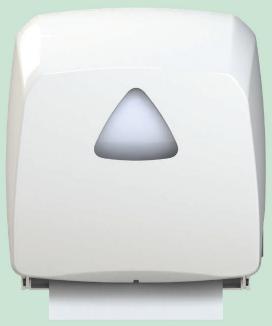

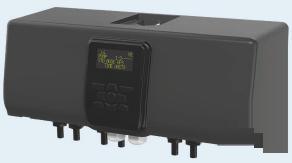



Most cloths and wipers are sold in to the customer as part of a system that also incorporates a purpose-designed dispenser. But how much value does this dispenser actually add to the mix? ECJ asks manufacturers their views.
a controlled nozzle or plate that allows the sheets to be dispensed one by one. Increasing numbers of customers are seeking this benefit to avoid free-flow dispensing - when someone pulls out a long length of wiper that is not required for the job in hand.
Using less paper of a better quality saves both time and money and also has a positive sustainability impact.”
back to the wiping source to fetch more, she said.
“Our research also showed that a large number of machine operators are interrupted at least 20 times during their working day by having to fetch or dispose of wiping and cleaning products,” she said.
WIPER COMPANIES TEND to make a big deal about the dispensers in which their products are housed. To listen to their advertising pitches one could almost be forgiven for inferring that the box, pouch or carton containing the wipers is actually more important than the cloths themselves.
But does the dispenser really make that much difference to a wiping system? Surely the quality of the product is allimportant – much more so than the box in which it is contained?
A good dispenser has three main benefits according to Kimberly-Clark Professional’s senior product manager Andrew Gardner. “Firstly, it will protect the wipers from external contamination and make the supply last longer when it is not in use,” he said. “Secondly, it controls dispensing which saves on costs and reduces wastage.
“And thirdly it provides convenience and versatility because a dispenser can be mounted on a wall, placed under a bench, on a desk, table, trolley or on the floor.”
The protective function of the unit is particularly important he says. “A dispenser provides an enclosed environment that will shield the paper or non-woven wiper from external hazards and ensure the products either stay dry – or fully saturated, if they are pre-impregnatedfor long periods of time,” he said.
“A good dispenser should also have
He says the function of preventing cross-contamination is crucial. “This is particularly important in environments where hygiene can’t be compromised,” he said. “Contamination can cause health issues in a hospital or could damage the preparation process in a food production line. And it could also generate unplanned downtime in a sensitive manufacturing production site.”
Kimberly-Clark offers a range of wallmounted and floor-standing dispensers along with units that may be placed under a bench either vertically or horizontally. When equipped with a dispensing nozzle these are said to cut paper consumption by up to 25 per cent. New from the company is the Midi Roll non-woven solution which is claimed to combine consumables and a dispenser in one.
Essity’s communications director Jenny Turner agrees that protecting the wiper before use is an important function of any dispenser. “It will also reduce waste caused by spillages or contamination,” she said.
Consumption control
“A good dispenser will have the further function of controlling consumption of the product which will offer cost and sustainability benefits. And it helps to create a tidy workplace and contribute to a safe working environment, while also ensuring that wiping materials are easily identifiable and always accessible close to the point of use.”
A recent study carried out by Essity revealed that 74 per cent of machine operators regularly take more wipers than they need in order to avoid having to walk
“Having a convenient dispenser source close to hand can save time and prevent operatives from taking more than they need.”
She added there are a number of sectors in which having the right wiper nearby is particularly important. “Sustaining hygiene compliance is critical in food and healthcare environments, for example,” said Turner. “And in manufacturing environments unprotected wipers could cause damage to machines which might result in lost production time or damage to products resulting in rejected stock and lost output.”
Tork offers a wide range of wiping and cleaning products designed for industrial environments. These come in Tork Performance dispensers which can be supplied in a portable format or wall mounted with the aid of magnets, screws, wall brackets or suction cups.
“In a business that is under constant pressure to increase productivity and streamline processes, downtime can have a significant negative impact on quality and delivery,” said Turner. “Efficient and effective dispensing solutions play a number of important roles in supporting operations.”
The primary function of a dispenser is clear from its name, says Andrea Susanne Dold from Hagleitner’s public relations department. “Its job is to distribute various items such as paper towels, tissues, cloths and wipes,” she said. “This is important because when a dispenser is at arm’s length, it is easy for staff to grab a sheet and quickly wipe down a surface. And this ultimately leads to a cleaner, safer and healthier environment.”
A dispenser will also prevent con-
tamination from sticky fingers and help to control consumption, she said. “Every wet wipe is valuable which means waste is expensive,” said Dold. “Dispensers are designed to reduce waste by giving out one wipe at a time rather than allowing operatives to accidentally pull out a bunch of them in one go.
“The dispenser will also protect the wipes from drying out before use which means they will stay effective for a longer period.”
Most dispensers today can either be mounted on a wall where staff will know where to find them, or housed on a floor stand which allows for flexible placement, said Dold. “Either way the wipes are always close at hand,” she says. More efficient
“Incorporating dispensers into various settings can lead to enhanced operational efficiency, faster service and increased productivity. And this is particularly relevant for restaurants, hotels and manufacturing facilities.”
A further advantage is the fact that dispensers create a more organised working environment, she adds. “This is beneficial in areas with limited space such as commercial kitchens, crowded retail environments or busy fitness centres.”
Hagleitner claims its XIBU 2WIPE hybrid to be the world’s first automatic dispenser for wet disinfectant wipes. This uses a patented sealing system to keep the wipes moist and protect them from contamination. The product features a shelf-life monitor which is said to be crucial in hospitals where the efficacy of sanitising wipes is compromised if they are past their expiration date.
Contamination protection
A good dispenser will protect cloths from becoming dirty or contaminated in the workplace, says Vileda’s global application manager Paul Harleman. “In the case of pre-wetted wipes, it will also prevent them from drying out,” he said.
“Dispensers can be strategically mounted to the wall at point-of-use locations or on a trolley, which will reduce the time spent by operatives on searching for wipes. And although the main driver
Les producteurs d’essuyeurs tendent à faire grand cas des distributeurs qui contiennent leurs produits. Toutefois, ces distributeurs améliorent-ils vraiment les systèmes de nettoyage? On devrait penser que c’est la qualité du produit qui compte, et non la boîte qui le contient. ECJ explore la question.
leading to over-consumption is human behaviour, a dispenser can also help to reduce it.”
A dispenser needs to create “obstacles” to achieve this, he says. “For instance, a dispenser that gives out only one cloth at a time and obliges the user to wait before the next cloth is presented will act as a deterrent to most operatives, reducing the risk of them taking out multiple cloths.”
Dispensers fulfil many other important functions he adds. “A well-designed dispenser will harmonise with the interior while a durable, mounted dispenser will prevent the theft of wipes,” said Harleman.
“Wipes can also be pre-moistened inside the unit. And if a dispenser is internet-connected it can provide valuable data and enable optimised inventory management, cost control and other valuable improvements.”
Dispensers offer particular advantages in environments where hygiene is important because they ensure the continual availability of clean wipers, he said. “However in industrial settings, they can also help to manage dust and dirt and protect the wipes from contamination.”
Vileda offers a dispenser concept called
SafePlus in two versions: SafePlus Mini and SafePlus Maxi. These allow the user to take out a cloth and moisten it manually or pre-impregnate the entire contents inside the unit with the fluid of their choice.
So, is there ever a situation in which a dispenser is not strictly necessary? Kimberly-Clark’s Andrew Gardner is unable to think of one. “Every dispenser is developed with both the customer and the application in mind,” he said. “Specific tasks need specific solutions - and that includes an appropriate dispenser.”
Essity’s Jenny Turner concurs, but adds that all dispensers should be suitable for the location concerned. “Having mobile dispensers - and a choice of dispenser fixing options - will ensure that the use of a dispenser does not slow people down,” she said. “And in food processing areas where wash-downs are a critical part of the hygiene routines, waterproof dispensers that can remain in place throughout the process will help to streamline operations.”
However, Vileda’s Paul Harleman says a dispenser is not strictly necessary when using durable cloths. “For disposables, on the other hand, I think a dispenser is useful in any situation,” he adds.

Die Hersteller von Wischtüchern neigen dazu, eine große Sache aus den Spendern zu machen, in denen ihre Produkte enthalten sind. Aber stellt der Spender wirklich einen so großen Unterschied an einem Wischsystem dar? Sicherlich ist doch die Qualität des Produkts wirklich wichtig – viel mehr als die Verpackung, in der es sich befindet? Das ECJ erfährt Näheres.
Le aziende produttrici di panni tendono ad attribuire molta importanza ai dispenser in cui sono alloggiati i loro prodotti. Ma il dispenser è davvero così importante in un sistema di pulizia? La qualità del prodotto dovrebbe essere ciò che conta davvero, molto più della scatola in cui è contenuto, no? ECJ indaga.















Cleaning affords fantastic career progression and broad opportunities for all genders. In this article, Claire Fields, strategic partnerships director at OCS, looks at the breadth and depth of opportunities that this career path provides and demonstrates why gender bias should be challenged across the board when it comes to cleaning.
THE ROLE OF CLEANING – whether in retail, healthcare, hospitality or offices –has changed significantly in recent times, not least because of the Covid pandemic. This brought into sharp focus the need for all environments to place a much higher priority on being hygienically clean rather than just ‘clean to the untrained eye’. Cleaning has gone from being seen as a necessary service to keep areas of an organisation clean to the public eye, to one which is now viewed as a front-line service in protecting the health and wellbeing of members of the public, whether they are visitors to a store or patients in a hospital. The cleaning operative has gone from being simply ‘a cleaner’ to a ‘hygiene enforcer’ with a greater status placed on the work that they deliver.
With this change has come greater opportunity – the chance to elevate the world of cleaning and show everyone the amazing career progressions that are now available to those who are willing to embrace this new world. Cleaning is a non-gender specific role and, despite what stats may show, people from all walks of life, all genders and all skill levels join the world of cleaning because of a passion for it.
For me, the cleaning industry is much broader than just about making sure a building is clean; it’s about protecting the people who use that space from potential harm that typically goes unseen. Opening the door to the FM cleaning industry
I personally came to the outsourced cleaning industry by default. I was recommended to it by a friend and have never looked back. But as an industry we need to get better at promoting the genuine career progression that is available to people in our sector. This is truly an industry where the sky is the limit. With the right skill set and attitude, an individual can progress from the ‘shop floor’ to board level. And that is the real crux of the issue – advancing to managerial levels is not about gender. In fact, gender bias should be left at
the door and people should be considered based on their skillset, the ability to do the job at hand and their experience.
What should be a consideration now for every company offering cleaning as an outsourced service is inclusivity and equality within the entire workforce, including at managerial and board level. Having a great mix of people in all areas of the service means that you can offer a truly amazing and flexible service to your customers – something that is vitally important. It’s all about the experience and the skills they bring to that role – gender should never be considered a barrier or a ‘leg up’ to a managerial role.
We need to be better at demonstrating to people the pathways that are offered in the cleaning industry and showing that cleaning is much more than just how it is perceived by those outside of the industry. There are fantastic benefits of working within the cleaning industry that are not gender specific, such as flexibility and progression. These benefits are what makes the industry attractive to people of all ages and genders.
By highlighting all of the positive aspects of working in the industry we stand a better chance of encouraging more people to consider this as a long-term career and will positively influence the balance of the workforce across all areas of our service.
It’s really important to understand the true value of lived experience in a management team. The best managers and board members, in my experience, are those who know the role, understand what it takes to deliver a customer’s expectations and understand how to go above and beyond in doing that. It takes a range of different skills including, but not limited to, empathy, logic, drive, determination, directness, strategy and vision. None of these skills are gender specific. So, finding the right leader of people is about the skills they exhibit
rather than the gender as which they identify.
Organisations that value this lived experience in managers will undoubtedly go on to be incredibly successful at what they do, but only if the managers also exhibit the other key attributes of a successful manager. Just knowing what it’s like to be a cleaner will not necessarily make you a good leader of people. In my view, it comes back to the organisation you work for and how it recognises talent and then nurtures it in a way that helps individuals to develop into the role they are best suited for – it’s certainly not a one-sizefits-all process.
This approach will help every individual to be the very best version of themselves – whether that’s a shift manager, team manager, general manager or board director.
La propreté offre de très belles perspectives de carrière pour les femmes comme pour les hommes, affirme Claire Fields, directrice des partenariats stratégiques chez le prestataire de services OCS. Dans cet article exclusif por ECJ, elle contemple l’étendue et la profondeur des possibilités professionnelles du secteur et montre à quel point il est essentiel de venir à bout des partis prios sexistes dans le domaine de la propreté.
Die Reinigungsbranche bietet fantastische Karrierechancen und breitgefächerte Möglichkeiten für alle Gender, sagt Claire Fields, Strategic Partnership Director beim Serviceanbieter OCS. In diesem Artikel, der exklusiv für das ECJ verfasst wurde, geht sie auf die Breite und Tiefe der Möglichkeiten ein, die dieser Karriereweg bietet, und zeigt auf, warum Gender-Bias in der Reinigungsbranche generell angefochten werden sollte.
Le pulizie offrono una fantastica progressione di carriera e ampie opportunità per tutti i sessi, afferma Claire Fields, direttrice delle partnership strategiche presso il fornitore di servizi OCS. In questo articolo scritto esclusivamente per ECJ esamina la portata delle opportunità offerte da questo percorso di carriera e dimostra perché sia necessario abbattere i pregiudizi di genere a tutti i livelli quando si tratta di pulizie.
The question of gender I personally view the whole topic around gender and its relevance to the cleaning industry as very outdated. Cleaning is a gender-neutral role and can be a fulfilling career for any man or woman wishing to enter it.
For me, the bigger conversation should be around how we encourage more people to see the real benefits of a long-term career in the cleaning industry. It is a chal-
lenging and fulfilling career that can lead to many different roles, both within and outside of cleaning. Whether your goal is to eventually become a manager, to sit on a board, or simply to be the very best cleaning operative you can be, there is support and guidance for everyone
to achieve their aspirations regardless of age, gender, ethnicity or social background. As an industry, our job is to support those aspirations and provide career opportunities and clear pathways that enable people to achieve those and more.
ocs.com
There’s still time to get your ticket for the European Cleaning & Hygiene Awards in Lisbon on October 3. Visit echawards.com/attend to find out more
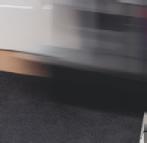
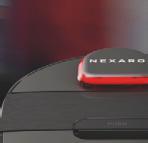

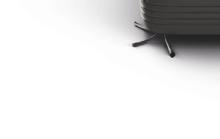
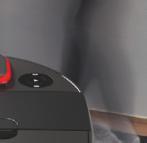




As the carpet care industry becomes increasingly automated, is there still a need for a person to manually operate a vacuum?
Ann Laffeaty examines the role of the human cleaner in carpet care and asks whether manual vacuums will ever become a thing of the past.
VACUUMING A CARPET can be a lengthy, laborious process. Pushing a piece of heavy machinery across a large floor will inevitably put a strain on the operator’s arms and back. And the job is a monotonous one that will take up a great deal of the cleaner’s working day while providing little in the way of work satisfaction.
As a result, a growing number of automated vacuum systems are now entering the market. Besides having the advantage of taking the physical strain away from the operator these can also be programmed to sweep a carpet at any hour of the day or night for added convenience.
So, does a manually-operated carpet care system still offer any advantages over an automated one in terms of efficiency, productivity and performance? And if not, are human cleaners still required for the task of vacuuming in some circumstances?
Comprehensive carpet care solutions require more than just a vacuum cleaner, says Kärcher’s senior consultant cleaning solutions and corporate account projects Gundula Braun. “The best machines and detergents should form part of a proper carpet care programme – and this points to the need for humans to be physically involved,” she said.
Human involvement
However, smart technologies are becoming increasingly prevalent, she admits. “Some machines now work autonomously to such a high degree that they relieve some of the cleaner’s burden in certain areas,” says Braun. “However, it is still necessary for a human operative to use the vacuum for tasks such as hoovering staircases and overhead areas – both operations that are currently beyond the capabilities of smart technology.”
A manually-operated solution tends to be more adaptable in unforeseen situations where a fast reaction is required, she says. “These machines also work well when carrying out tasks such as cleaning around furniture and under desks as well as vacuuming curtains, air vents and
upholstery,” she adds.
“On the other hand, an automated vacuum cleaner can be a massive help in large floor areas where there are few obstacles such as in hotel corridors, large meeting rooms and ballrooms. Here a machine will provide significant benefits such as guaranteeing good results while also freeing up staff to concentrate on manual cleaning tasks.”
Humans and machines have different approaches when it comes to encountering items of furniture, she says. “Automated vacuum cleaners are programmed to adapt to certain obstacles although they are currently limited in their ability as to how to deal with them,” she said.
“A human cleaner may well move an obstacle out of the way and then return it to its previous place once the cleaning process is completed. And where obstacles can’t be moved, a human cleaner will be able to clean around them more efficiently than an automated machine. They also have a different range of actions and more tools at their disposal when it comes to overhead and above-floor vacuuming as well as cleaning in corners and small crevices.”
However, the use of autonomous cleaning systems is not limited by business hours or occupational regulations – and this is a key advantage, she adds. “In other words, machines can be programmed to clean overnight or whenever it is convenient,” said Braun. “They are not susceptible to the strains and injuries of human operators and they provide consistency in their cleaning scope and quality. But automated machines can only react within the parameters of their programming.”
An ideal solution is one that combines human cleaners with machines, she says. “All in all, autonomous machines provide great relief for personnel particularly when carrying out time-intensive, monotonous tasks,” said Braun. “In fact, manual and automated cleaning processes complement each other in creating a clean and
healthy environment.”
Kärcher offers a range of manual vacuums including the BRS 43/500 C, which is said to be capable of cleaning large floor areas with minimal water and detergent and little operator effort. The company also manufactures the autonomous robotic vacuum cleaner KIRA CV 50 which features ultrasound sensors for glass detection; sensors to follow walls; drop sensors to avoid falling down staircases and a collision sensor. It can autonomously generate maps and plan paths and is claimed to reduce the amount of set-up time required.
Human operators have the advantage of being able to quickly identify different types of flooring and soil levels, says Truvox national sales manager Paul Robinson. “They can also move furniture and other obstructions out of the way to ensure effective cleaning,” he said. “And the variety of tools and accessories available makes it possible for human operators to obtain excellent results.”
However, the operator needs to be trained correctly in the use of a vacuum to minimise the risks of injury, he adds. “Hygiene has become a high priority in all premises since the pandemic which means cleaning has become more of a ‘front of house’ activity,” he said. “As a result, all machines need to be easy to use and attractive to look at.”
Repetitive movement
The company’s VTVe compact model is said to be simple to use and maintain. It is claimed to feature easily accessible on-board cleaning tools including a crevice and brush tool for detailed cleaning and for use in hard-to-reach areas.
Physical strain caused by repetitive actions and heavy lifting are an occupational hazard during carpet cleaning, says Cleanology’s marketing director Kate Lovell. “The back, shoulders and arms of the operator are particularly likely to be affected,” she said. “However, these risks can be averted when cleaners adopt good posture and take regular breaks.”
While the cleaning industry is increasingly embracing smarter technologies there are still several instances in which the need for operatives is important, she
Face à l’automatisation constante du nettoyage de tapis et moquettes, on peut se demander si on a encore besoin de travailleurs pour en assurer le soin manuellement. Examinant le rôle du nettoyeur humain de tapis et moquettes, Ann Laffeaty se demande si les aspirateurs manuels ne seront pas un jour relégués au passé.
believes. “Humans are better equipped to deal with complex layouts such as stairs and high-up areas and can quickly respond to accidental spillages and stains,” she says. “And this type of immediate human intervention offers more flexibility than relying on machinery.”
Manually-operated machines are also likely to be more effective when working in cluttered areas while also being better suited to cleaning around corners and edges, adds Lovell. “And the presence of human operatives is reassuring in areas where customer interaction is important.”
Cleanology specialises in the provision of professional cleaning services, including carpet cleaning, across different industries. So, will manual vacuums ever become a thing of the past? Or will there always be a place for a human in carpet cleaning?
Smart technologies will certainly become smarter, according to Kärcher’s Gundula Braun. “However, in the foresee-
able future we do not anticipate human carpet cleaners being replaced because there are still situations in which even smart systems require attention and expertise,” she said.
No single solution
Robotic cleaning machines are not the total answer, agrees Paul Robinson from Truvox. “There will always be a place for humans in the cleaning industry because robots cannot easily determine different floor types, soil levels and other variables,” he said.
And Cleanology’s Kate Lovell believes that technology will increasingly be integrated into cleaning regimes. “Automated vacuums will handle routine cleaning in the future while human operatives will tackle the more complex and detailoriented tasks,” she said. “But the likelihood is that there will always be scenarios where human involvement is vital - and even preferred.”

Ist es aufgrund der zunehmenden Automatisierung der Teppichpflege immer noch notwendig, dass eine Person einen Staubsauger manuell bedient?
Ann Laffeaty untersucht die Rolle der menschlichen Reinigungskraft bei der Teppichpflege und fragt, ob manuelle Staubsauger jemals der Vergangenheit angehören werden.
Con il crescente utilizzo delle tecnologie di automazione nel settore della cura dei tappeti, vi è ancora bisogno che una persona azioni manualmente l’aspirapolvere? Ann Laffeaty esamina il ruolo dell’addetto alle pulizie nella cura dei tappeti e si chiede se gli aspirapolvere manuali diventeranno mai un ricordo del passato.
Texway from HTS Bio is a probiotic carpet cleaner designed for use in injection-extraction machines, combining selected microorganisms with biosurfactants. According to the company, bacteria stays active on surfaces for up to eight days post-application.
The cleaner’s 97 per cent natural-origin formula is also designed to be gentle on carpet fibres, contributing
to an extended lifespan for carpets, and it leaves a subtle, refreshing scent. By integrating probiotics and biosurfactants, Texway minimises the need for harsh chemicals, aiming to lower environmental impact.
www.htsbio.com
Prochem Europe has introduced the Steemeasy, a compact carpet and upholstery extrac-


tion cleaner designed for efficient firstfloor cleaning without needing to relocate the unit. This model incorporates advanced
specifications while retaining proven technologies, including a three-stage vacuum motor and a 150 psi Aquatec pump.
The Steemeasy features a more powerful motor that sup-
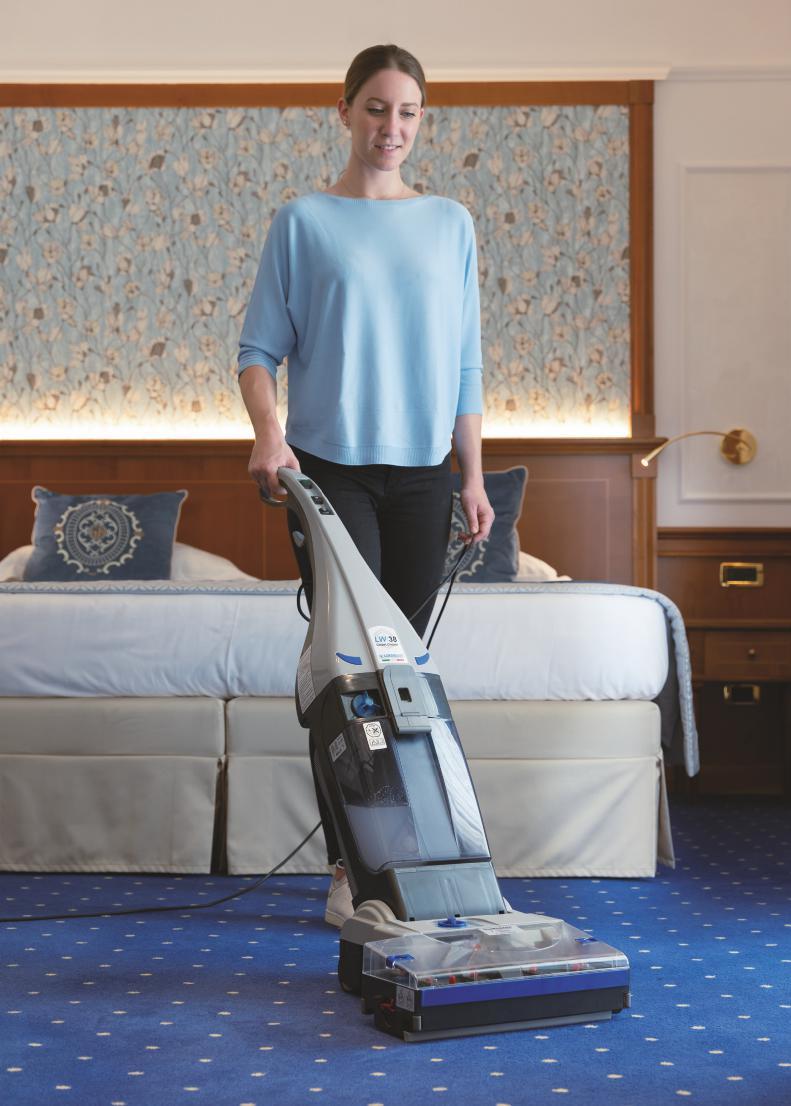
ports a 7.5-metre extension hose, allowing it to remain on the ground floor while the hoses and cleaning wand are used upstairs. It includes a 22-litre clean solution tank and an 18-litre waste tank. The waste tank uses a mesh filter bag instead of a conventional ball float system and filter, which helps maintain cleanliness and prevent waste foam or water from damaging the vacuum.
www.prochem.co.uk
The Cleanfix TW Compact offers bidirectional cleaning capability, allowing it to clean carpets effectively in both forward and reverse motions. This feature, supported by two suction nozzles and a rotating brush, ensures comprehensive cleaning with each pass it says. This model can handle both heavy-duty tasks in high-traffic areas and regular maintenance in settings like offices, hotels, and residences. Its compact design and manoeuvrability make it suitable for navigating tight spaces without sacrificing cleaning power or efficiency. The machine is also userfriendly, with intuitive controls. www.cleanfix.com
• Le Texway et un nettoyant probiotique, proposé par HTS Bio, destiné à être utilisé dans des machines d’injection-extraction.
• La Steemeasy et la dernière-née des machines de nettoyage de moquette par extraction de Prochem Europe.
• La TW Compact de la société Cleanfix et une machine de nettoyage qui fonctionne en marche arrière et en marche avant.
• Texway ist ein probiotisches Reinigungsmittel von HTS Bio, das für den Einsatz in Sprühextraktionsgeräten entwickelt wurde.
• Der Steemeasy ist die neueste Erweiterung der Produktfamilie mit Teppich- und Absaugmaschinen von Prochem Europe.
• Bei der TW Compact von Cleanfix handelt es sich um eine Reinigungsmaschine, die in Vorwärtsund Rückwärtsrichtung arbeitet.
• Texway è un detergente probiotico di HTS Bio progettato per l’uso in macchine ad iniezione-estrazione.
• Steemeasy è l’ultima arrivata nella famiglia di macchine per la pulizia e l’estrazione di tappeti di Prochem Europe.
• La TW Compact di Cleanfix è una macchina per la pulizia che funziona in direzione avanti e indietro.
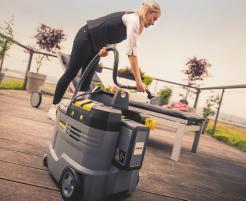
Kärcher’s battery-powered professional spray extraction machine, the Puzzi 9/1 Bp, can be used for many everyday cleaning tasks on upholstery and carpets. In comparing the life cycle assessment of cordless vacuum cleaners or spray extractors with corded ones - says Kärchercordless devices are far more beneficial. And rechargeable devices draw half as much electricity as corded machines.
Boasting optimum suction power, the Puzzi 9/1 Bp is part of the Kärcher Battery Universe and has a runtime of up to 35 minutes with a charging time of
60 minutes. Thanks to its compact size it is also easy to transport and carry. Four models are available, with different battery, charging station and accessory options. www.karcher.com
The LW38 CC from Lindhaus is designed for cleaning synthetic rugs and carpets, though it is not recommended for natural fibres without consulting the manufacturer. The machine features an advanced cleaning system that combines mechanical action and suction to recover over 90 per cent of the water used dur-
ing the cleaning process. It operates with a soft roller rotating at 1500 rpm and a front suction nozzle, which ensures
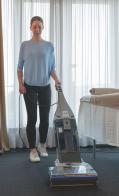
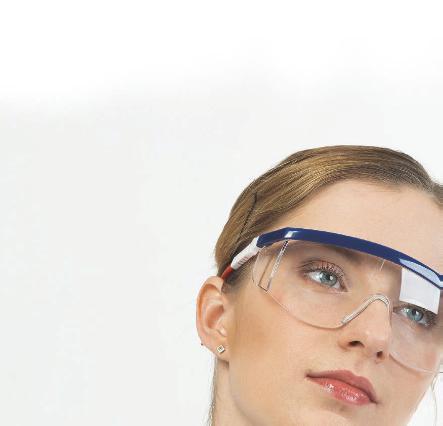
thorough cleaning of carpets and rugs while leaving surfaces almost dry. There is a transparent top cover that allows visibility of the water flow from the carpet to the recovery tank. The LW38 CC also includes a spray extraction function. A quick coupling at the back of the machine enables this function.
www.lindhaus.com
O 143 SPRAY is Ghibli & Wirbel’s roto-orbital single disc specifically designed for cleaning delicate surfaces such as carpets. The oscillating head adapts to all surfaces and enables the removal of dirt particles from fibres with short drying time. Both the spray system and on/off button are on the handle of the machine while the spray system comprises a 12-litre tank that’s easy to install and remove; a pump and two adjustable nozzles.
www.ghibliwirbel.com
• La Puzzi 9/1 Bp de Kärcher est une machine d’injection-extraction à batterie.
• Lindhaus propose la LW38 CC, une nouvelle machine de nettoyage en profondeur de tapis, moquettes et carpettes.
• La O143 Spray de Ghibli & Wirbel est une machine à disque unique pour le nettoyage de tapis et moquettes.
• Beim Puzzi 9/1 Bp von Kärcher handelt es sich um ein akkubetriebenes Sprühextraktionsgerät.
• Bei der LW38 CC von Lindhaus handelt es sich um eine neue Teppichreinigungsmaschine zur Grundreinigung von Teppichen und Vorlegern.
• Bei der O143 Spray von Ghibli & Wirbel handelt es sich um eine Einscheibenmaschine, die für die Reinigung von Teppichen und Teppichböden konzipiert wurde.
• Puzzi 9/1 Bp della Kärcher è una macchina per l’estrazione spray alimentata a batteria.
• La LW38 CC di Lindhaus è una nuova lavamoquette per la pulizia profonda di tappeti e moquette.
• O143 Spray è la macchina monodisco della Ghibli & Wirbel progettata appositamente per le moquette.













Despite its growing prominence, the concept of a smart building is often met with confusion due to its broad and multi-faceted nature. So, what exactly is a smart building, and why is there such a growing interest in this concept? Campbell Murdoch, ABM business & industry managing director for the UK tells us more.
control to security and cleaning- works in harmony. This not only maximises efficiency but also ensures the building can adapt to changing needs and conditions, whether that’s responding to the number of occupants in a room or adjusting energy usage based on the time of day.
IN TODAY’S FAST-EVOLVING world, the term ‘smart building’ is more than just a buzzword; it represents a transformative shift in how we think about and manage our built environments. However, despite its growing prominence, the concept of a smart building is often met with confusion due to its broad and multi-faceted nature. So, what exactly is a smart building and why is there such a growing interest in this concept?
At its core, a smart building integrates various systems and technologies to improve the efficiency, sustainability and comfort of the environment it houses. This could range from automated lighting and HVAC (Heating, Ventilation, and Air Conditioning) systems to advanced security measures and energy management tools. However, what truly distinguishes a smart building is its ability to connect these disparate systems into a cohesive network, enabling real-time communication and data sharing across platforms. Intelligent decisions
This interconnectedness allows for more intelligent decision-making, helping facility managers optimise performance, reduce operational costs and enhance the occupant experience.
The purpose of a smart building goes beyond mere automation. It is about creating an ecosystem where every element of the building - from lighting and climate
Several factors are contributing to the growing interest in smart buildings. Firstly, there is the increasing pressure to meet sustainability goals. As governments and organisations alike strive to reduce their carbon footprint, smart buildings offer a practical solution. By optimising energy use, reducing waste and improving resource management, these buildings can significantly contribute to sustainability targets.
Another driver is the demand for improved occupant experience. In the post-pandemic world, there is a heightened focus on health, safety, and wellbeing. Smart buildings, with their advanced environmental controls and real-time monitoring, are well-positioned to meet these demands, offering healthier and more comfortable spaces for occupants. Driving demand
Additionally, the rise of the Internet of Things (IoT) has made the implementation of smart technologies more accessible and cost-effective. With IoT, even older buildings can be retrofitted with smart systems, enabling facility managers to upgrade their operations without the need for costly new construction.
One of the most significant advantages of smart buildings is their ability to solve complex challenges faced by modern facility managers. For example, energy efficiency is a critical concern, especially as energy costs continue to rise and environmental regulations become stricter. Smart buildings can adapt to real-time data, ensuring that energy is used only when and where it is needed.
Another challenge is the increasing complexity of building management. With so many systems in play - each with its own set of controls - managing a large
facility can be overwhelming. Smart buildings simplify this by integrating all systems into a single platform, providing facility managers with a unified view of the building’s operations. This not only streamlines management but also enables predictive maintenance, where potential issues are identified and addressed before they become major problems.
Adapting and reacting
A particularly relevant example of how smart technology can revolutionise building operations is in the realm of cleaning. Traditional cleaning schedules are often rigid and based on assumptions rather than actual needs. However with smart technology, cleaning can be guided by real-time data - such as occupancy levels, foot traffic, and air quality - ensuring spaces are cleaned only when necessary. This not only improves efficiency but also ensures high-traffic areas receive more attention, enhancing overall hygiene and reducing the spread of germs.
One of the most powerful aspects of a smart building is its ability to generate and analyse vast amounts of data. This data can provide invaluable insights into how the building is being used, allowing for continuous optimisation of its operations. For example, by analysing patterns in energy usage, a building can identify areas where energy is being wasted and make adjustments to reduce consumption.
Furthermore, the data collected by smart systems can inform long-term strategic decisions. Facility managers can use this data to forecast future needs, plan maintenance schedules, and even justify investments in new technologies. The key is not just to collect data, but to use it meaningfully - transforming raw information into actionable insights that drive better outcomes.
As the adoption of smart buildings continues to grow, the role of facility managers is becoming increasingly pivotal. To fully leverage the benefits of smart
Continued page 28


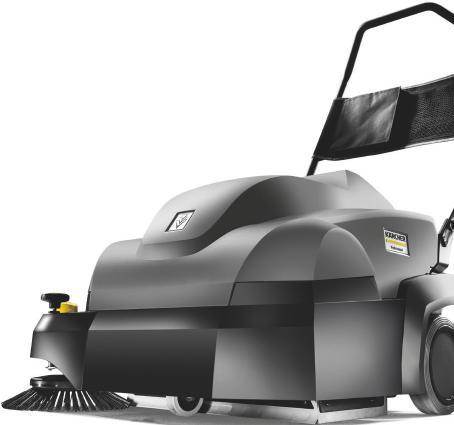

Efficient carpet cleaning rethought: the battery-powered CVS 65/1 carpet vacuum sweeper is perfect for medium-sized and large areas of carpet. Kärcher’s carpet cleaners combine the rigorous cleaning power of an upright brush-type vacuum cleaner with really great surface performance on undisguised surfaces. Whether this is in office buildings, in hotels, in conference buildings, at airports, on indoor tennis courts, in cinemas or at casinos, Kärcher’s carpet cleaners give you outstanding results. karcher.com
arpet vacuum sweeper et cleaners combine
Lead the charge (continued from page 26)
technology, facility managers need to be proactive in their approach, asking the right questions and seeking out opportunities for improvement.
Firstly, it’s essential to assess the current state of the building’s infrastructure. Are the existing systems compatible with smart technology? If not, what upgrades are necessary? Understanding the building’s current capabilities is the first step toward a successful implementation.
Next, facility managers should focus on identifying key areas where smart technology can deliver the most value. This could involve conducting a thorough analysis of the building’s operations to pinpoint inefficiencies or areas where automation could have the greatest impact. For instance, if energy consumption is a major concern, exploring options for smart energy management systems should be a priority.
Bien qu’on en parle de plus en plus, le concept d’un immeuble intelligent est source d’une certaine confusion en raison de sa nature élargie et diverse. Qu’est-ce donc un immeuble intelligent et pourquoi ce concept suscite-t-il tant d’intérêt ? Campbell Murdoch, administrateur délégué de la société ABM et responsable de son activité britannique, s’étend sur cette question.
Facility managers should also engage with stakeholders, including building occupants, to understand their needs and expectations. After all, a smart building is only as effective as its ability to meet the demands of those who use it. By involving stakeholders in the planning process, facility managers can ensure the smart building’s features align with user needs, enhancing overall satisfaction.
Pivotal role
Finally, facility managers need to stay informed about the latest advancements in smart technology. The field is rapidly evolving and staying up to date with new developments will be crucial in maintaining a competitive edge. This could involve participating in industry events, joining professional networks or even collaborating with technology providers to explore
Trotz seiner wachsenden Bedeutung stößt das Konzept eines intelligenten Gebäudes aufgrund seines breiten und vielschichtigen Charakters häufig auf Verwirrung. Was genau ist ein intelligentes Gebäude, und warum wächst das Interesse an diesem Konzept?
Campbell Murdoch, ABM Business & Industry Managing Director für das Vereinigte Königreich, erzählt uns mehr.
new solutions.
Smart buildings represent a significant evolution in the way we design, operate, and manage our built environments. While the concept may seem complex, its benefits are clear: increased efficiency, improved occupant experience, and enhanced sustainability. For facility managers, embracing this trend is not just about keeping up with the times - it is about unlocking new opportunities to add value, reduce costs, and improve overall building performance.
As we move forward, the question is no longer whether to adopt smart technology, but how to do so effectively. By asking the right questions, leveraging data and staying informed about the latest innovations, facility managers can lead the charge in transforming their buildings into smarter, more efficient spaces for the future.
Nonostante la sua crescente importanza, il concetto di edificio intelligente è spesso accolto con confusione a causa della sua natura ampia e sfaccettata. Allora, cos’è esattamente un edificio intelligente e perché sta aumentando l’interesse per questo concetto? Campbell Murdoch, amministratore delegato di ABM Business & Industry per il Regno Unito, ci dice di più.
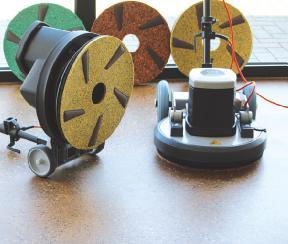






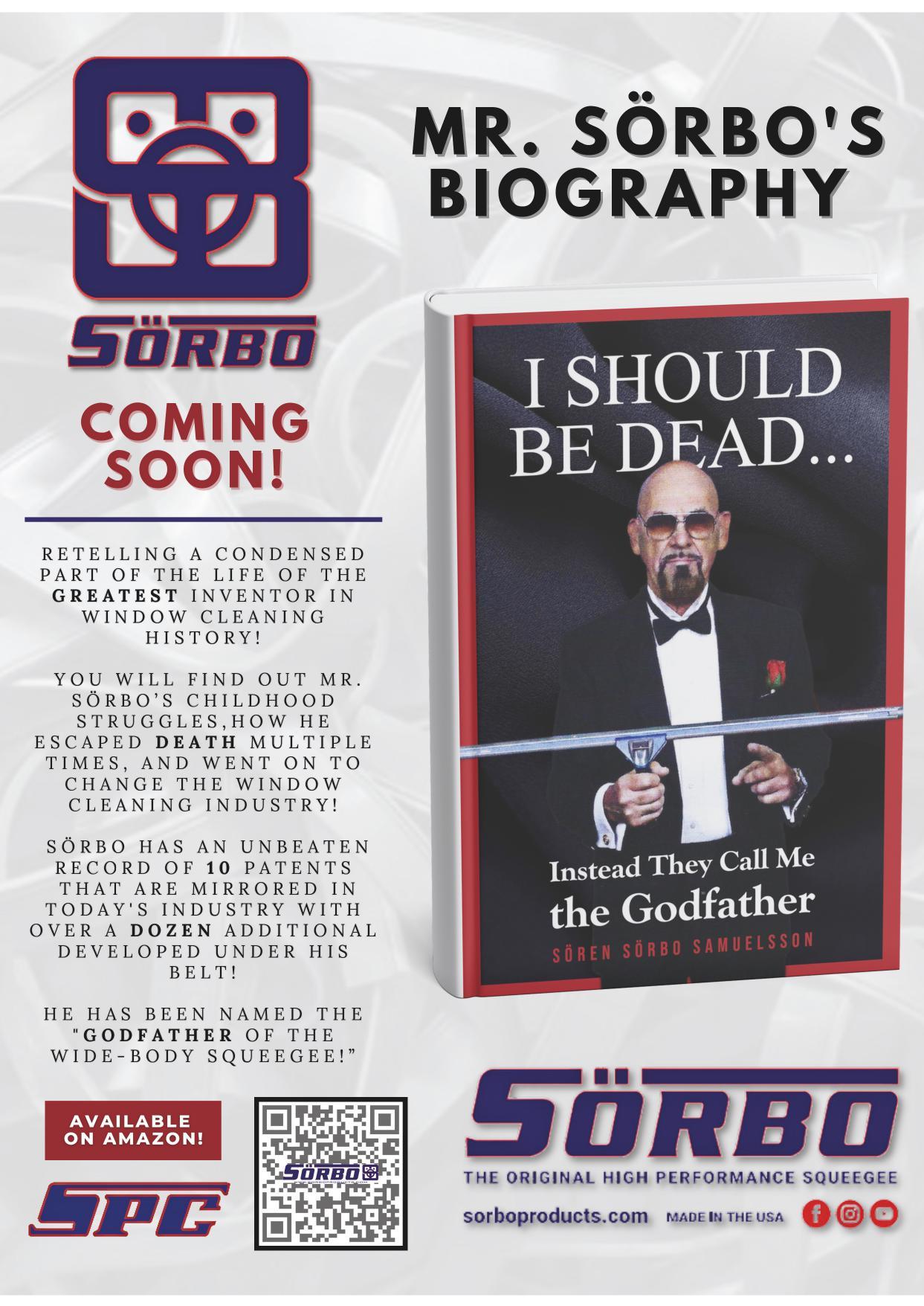
The 244NX-RC is lightweight and easy to use, leaving floors clean, dry, safe and streak-free, whilst reducing labour costs by 70% and water use by 80%.*
•Up to 80 mins Runtime
•1-Hour Fast Charge
•Made Using Minimum 20% Recycled Plastic*
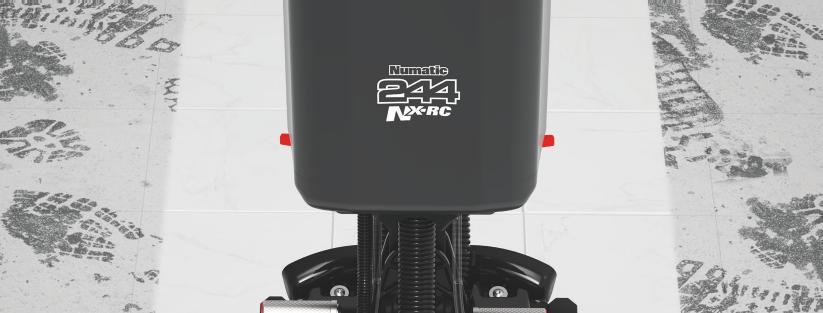


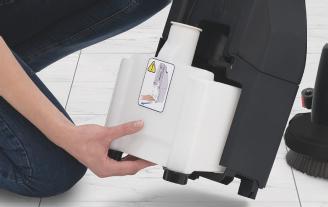
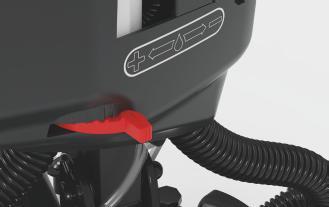


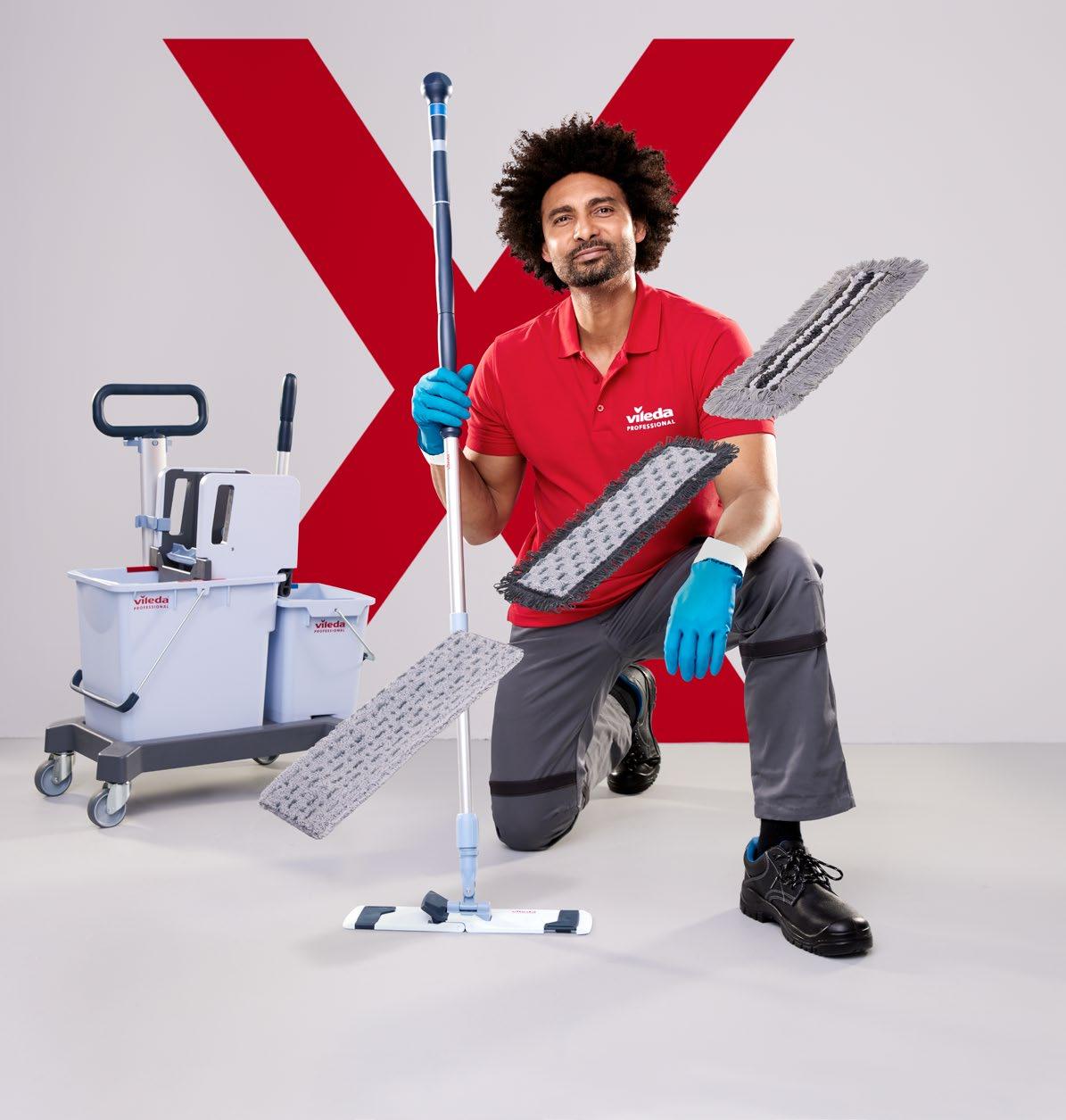

MOPPING CAN BE hard work. It requires bending, stooping and stretching – all actions that can cause physical problems on the part of the operator.
This floor-cleaning method is also fairly dated, having been around for well over a century. The mop as we know it was patented in the US in 1893 by Thomas Stewart who invented a clamping device that could be used for wringing.
However, with increasing levels of technology and automation available today, the need for people to put themselves through the physical stress of manual mopping has been reduced. So, what are the best and most viable alternatives to the traditional mop? And what are manufacturers doing to ease the task of mopping for the operative?
There is no denying the fact that mopping can be fairly stressful in terms of effort, says Kärcher’s business development manager Beyza Gügercin. “This is the case with any type of manual labour,” she adds. “However, the latest tools, systems and mopping technologies have all been designed to assist operators in their daily work.”
Musculoskeletal disorders are among the most common conditions associated with manual mopping, she said. “Cleaners may develop problems with their muscles, nerves, tendons, joints, cartilage and spinal discs, while carpal tunnel syndrome is another common issue.”
However, manual mopping continues to be widely carried out because it is an easy solution, she says. “Anyone can mop a room with decent results without having received much training, and a mop can be used in areas that are beyond the reach of machines such as in confined spaces and on staircases,” says Gügercin.
Another advantage of mops is that they are always readily available, she adds. “It is a quick process to grab a mop and clean an area with a spray applicator and a microfibre head, which will ensure a quick dry,” she said. “And manual mops require no power source which makes them
particularly sustainable because they are ‘human-operated’.”
Microfibre mops have the further advantage of helping to reduce the consumption of water and detergent, according to Gügercin. “They are also a cost-effective option in terms of initial investment while still producing high levels of performance,” she said.
However, she believes that ergonomics need to play a crucial role in mopping. “A mop should be lightweight, durable and easy to use while also providing a good performance and gliding smoothly over the floor,” she said. “At Kärcher we the pay particular attention to usability and ergonomic handling by cleaning staff when developing our products.”
Kärcher’s Infinity system features a handle with an ‘S’-shaped join which is said to allow the operator to mop faster while also reducing the number of wrist movements required. The company also offers the Flexobox, a mop box that can be opened and closed with the foot to avoid the need for bending.
Cleaners are liable to experience physical discomfort when mopping if they adopt improper techniques or incorrect postures, according to Greenspeed’s marketing executive Rosaliene Verhoef.
“This is why it is so important they always maintain a straight back while mopping and they ensure the handle is of the correct length, which means it should reach up to nose height,” she said.
Cleaners should also avoid using excessively wide strokes when mopping and adopt a ‘Z’ motion rather than an ‘S’ motion, she adds.
“The ‘Z’ motion involves shorter, more controlled movements that minimise the twisting and turning of the wrist,” she said. “This technique engages larger muscle groups in the arms and shoulders and distributes the effort more evenly, reducing the risk of repetitive strain on the smaller
The manual task of mopping can take its toll on the arms, backs and shoulders of the operator. Why, then, do so many businesses still use this traditional cleaning method, asks Ann Laffeaty? And what are manufacturers doing to ease the physical strain on the cleaner?
Easing the strain (continued from page 33)
muscles and joints of the wrists.”
But despite their potential to cause aches and pains, mopping systems deliver effective results, she adds. “Mops can reach into even the smallest corners and crevices ensuring a thorough clean without requiring a significant investment.
“Mopping is also versatile and can be used on a wide range of floor surfaces without any concerns about equipment compatibility or potential floor damage. It is also often more practical in restricted spaces and in places where there are numerous obstacles. And it provides added convenience in locations where machine storage just isn’t feasible.”
Manufacturers can play a key role in helping to ease the task for the operator, Verhoef believes. “They can introduce ergonomic designs, for example, along with handles that make it easier to attach and remove mop heads without having to bend over or directly handle the mop.
“Developing mops with a high cleaning power but with minimal floor friction also helps. And the cleaning process can be further simplified by ensuring the operator has an adequate supply of mops and washing facilities without the need for wringing and rinsing with a wringer.”
Greenspeed’s Click’M C system has a magnetic locking mechanism that allows for hands-free operation, which is said to reduce the need for bending and manual handling. The company claims its Hydra
cleaning system is both lightweight and easy to use with an ergonomic design that is said to reduce the need for physical effort. And this can help to prevent the aches and pains in the arms, back, and shoulders that are commonly associated with traditional mopping, according to Greenspeed.
Repetitive motion, bending and twisting are all actions that can lead to physical problems when mopping, says service provider Cleanology’s Kate Lovell. “There is also the risk of strain to the arms and shoulders when the operator is forcefully scrubbing particularly dirty areas or wringing out heavy mops,” she adds. “However these issues can be avoided by using a lightweight mop with adjustable handles and by adopting a good posture while also remembering to take regular breaks.”
Other conditions associated with mopping include tendonitis, RSI, lower back pain, tennis elbow, knee problems and foot and ankle strains, she says.
“However, many businesses stay loyal to this traditional cleaning technique for various reasons including the low cost of equipment and the fact that little training is required,” says Lovell. “Cleaning machines may also require regular servicing and can be costly to repair if they break down. And manual mops are ideal for use in hard-to-reach areas that floor scrubbers may not be able to access.”
Another advantage of manual mopping

Les tâches de balayage humide peuvent rudement solliciter les bras, le dos et les épaules de l’opérateur. Cela étant, pourquoi les entreprises sont-elles si nombreuses à recourir encore à cette méthode de nettoyage traditionnelle? C’est la question que se pose Ann Lafeatty. Et que font les fabricants pour alléger ces sollicitations sur l’agent de nettoyage?
Die Arbeit mit einem manuellen Mopp kann die Arme, den Rücken und die Schultern des Bedieners strapazieren. Warum also nutzen so viele Unternehmen diese traditionelle Reinigungsmethode noch immer, fragt Ann Laffeaty? Und was tun Hersteller, um die physische Belastung von Reinigungskräften zu verringern?
is that it permits operatives to clean thoroughly around corners, edges and other obstacles that machines may struggle to reach, she says. “Any urgent cleaning of spills and stains may be tackled straight away with a mop, and there are none of the set-up or warm-up periods associated with a machine,” said Lovell. “They are also better suited to noise-sensitive environments such as schools and hospitals and require minimal storage space.”
Musculoskeletal disorders affect a high percentage of cleaners and are a leading cause of absences from work, says Filmop’s business development manager Paolo Scapinello.
“The onset of these conditions may be linked to the repeated execution of movements that require effort,” he said. “They could also be the result of excessive extension caused by certain tasks and by adopting a poor posture for prolonged periods.
“And they can lead to severe consequences not only for workers, who will experience physical suffering and a decrease in wellbeing, but also for employers who will have to manage staff absences and bear the corresponding costs.”
However, musculoskeletal disorders can be avoided with the use of ergonomic equipment and adopting correct procedures, he says. Filmop’s Boost wringer is said to remove the need for exerting intense and repetitive strain while the ErgoSwing is claimed to allow the operator to maintain the correct posture when cleaning.
Mops offer several advantages despite their pitfalls, according to Scapinello. “Their compact size facilitates cleaning in narrow aisles, around obstacles and under furniture,” he said. “And the fact that mops are easier to use than machines reduces the amount of staff training time required.”
Manufacturers can help to ease the strain of mopping by providing ergonomic equipment, he says. “Our research and development department is constantly engaged in designing new systems that are engineered to avoid strains, prevent the need for continuous bending and discourage a poor posture,” says Scapinello.
L’attività di pulizia manuale può mettere a dura prova le braccia, la schiena e le spalle dell’operatore. Perché, allora, così tante aziende utilizzano ancora questo metodo di pulizia tradizionale? Se lo chiede Ann Laffeaty. E cosa stanno facendo i produttori per alleviare lo sforzo fisico degli operatori?
Globo is a universal wet mopping system developed by Filmop that can be used like any traditional system (with strap tape system, pockets or flaps) ac-
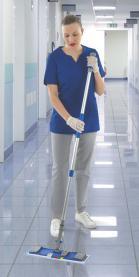
cording to the task and how the operative wants to work. This, the company says, means operations can be optimised without forcing habit changes.
The Globo system consists of a foldable mop holder and a range of mops with micro flaps. Because it is touch-free it’s suitable for use in hygiene-critical environments, and fixing and releasing of the mop is quick and easy. And there are also ergonomic benefits, as the operator does not have to
bend down continuously or be in uncomfortable positions. www.filmop.com
The Wecoline Carabao flat mop system, developed in collaboration with Moerman, combines ergonomic design, efficiency, and durability. The system features a trioval, S-shaped telescopic handle that enhances manoeuvrability and reduces physical strain on users.
A key feature is its ribbed flat mop, which expands the cleaning area by up to 2.5 times compared to traditional mops. The mop frame incorporates a magnetic system that facilitates faster mop changes, minimising the need for users to bend. www.wecoline.com


TTS’s touch-free mop disposal system Pockety is designed to minimise contact with dirt, viruses and bacteria. It features a bucket with a lid for collecting used mops, along with a specialised frame that facilitates easy operation. Pockety is compatible with TTS’s range of mops with pockets, both washable and disposable, allowing users to select the appropriate mop for various surfaces and levels of dirt. Pockety allows for the mops to be detached and collected without physical contact. The operator removes the frame from the lid to release the used mop, which then falls into a net bag inside the bucket. This helps maintain high hygiene standards and eliminates the need for bending over to pick up mops, which can reduce the risk of back pain associated with repetitive movements. www.ttsystem.com
• Filmop propose le système universel de balayage humide Globo pour répondre aux préférences et habitudes de l’opérateur.
• Wecoline Carabao est le nouveau système de serpillage conçu pour le travail à l’état humide ou à l’état mouillé.
• Pockety, un dispositif proposé par TTS, décroche les serpillères sales sans problème et en évitant tout contact avec l’opérateur.
• Bei Globo von Filmop handelt es sich um ein universelles Nassmoppsystem, das auf die Vorlieben und Gewohnheiten des Benutzers zugeschnitten ist.
• Bei Carabao handelt es sich um das neue Moppsystem von Wecoline für die Feucht- oder Nassreinigung.
• Bei Pockety von TTS werden verschmutzte Mopps sicher abgeworfen und gesammelt, ohne dass der Bediener sie berührt.
• Globo della Filmop è un sistema universale di mop bagnato progettato per soddisfare le preferenze e le abitudini dell’operatore.
• Carabao è il nuovo sistema mop della Wecoline progettato per la pulizia a umido o a bagnato.
• Pockety della TTS sgancia in maniera sicura i mop sporchi e li raccoglie senza alcun contatto da parte dell’operatore.





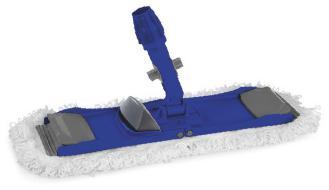













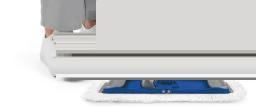

How are we performing in the global race to a digital future? This question has engaged EU policymakers in much navelgazing of late, leading to the conclusion that the bloc urgently needs to pick up the pace, reports Hartley Milner.
NOT SINCE THE Industrial Revolution has the world experienced a period of such sweeping and sustained change as in this age of technological innovation. Now as then, human ingenuity is fundamentally disrupting the status quo and ushering in unprecedented benefits for national economies, their businesses and populations.
Countries at the cutting edge of the digital transformation are likely to see higher productivity and growth, as well as the more efficient delivery of critical services such as hospitals, schools, energy, food production and internal security. Greater connectivity is opening up swathes of opportunities for businesses, enabling tech startups to create jobs in burgeoning renewable energy markets and for traditional industries to become greener and more sustainable in the quest for netzero carbon.
The European Commission is all too aware that the adoption and development
of advanced technologies will be crucial for Europe’s future competitiveness and prosperity. It says this is particularly true in today’s unstable geopolitical landscape where increasing cybersecurity threats demand “enhanced resilience and robust counter-measures”.
In July, the Commission published its second State of the Digital Decade report on the progress made towards objectives and targets set by the EU Digital Decade Policy Programme to 2030. It comes with a stark wake-up call that the region risks losing ground in the digital transformation to its international competitors. For the first time, individual member states are assessed, and their collective performance is found to fall far short of the EU’s level of ambition.
For the community to meet its transition targets, countries will need to invest more heavily in digital skills, high-quality connectivity, AI and data analytics, as well as semiconductor production and startup ecosystems. Member states must “strengthen their actions and be more ambitious” in achieving their targets, the report asserts.
The report flags up some of the most concerning gaps in meeting EU connectivity targets. Fibre networks –
critical for delivering gigabit connectivity and enabling the take-up of technologies such as AI, cloud services and the Internet of Things – have been rolled out to just 64 per cent of households. Only 50 per cent of the EU is covered by high-quality 5G networks, and their performance is still insufficient to deliver advanced 5G services. To address these challenges, countries should work with the European Commission to create a “truly functional digital single market”.
The uptake by European companies of AI, cloud and/or ‘big data’ – software for processing extremely large and diverse data sets – is well below the Digital Decade target of 75 per cent. Current trends indicate that only 64 per cent of businesses will be using Cloud services, 50 per cent big data and only 17 per cent AI by 2030.
The report places a huge stress on the importance of SMEs to the digitalisation of the business sector. SMEs comprise more than 90 per cent of all EU businesses and provide 100 million jobs, nearly two thirds of the region’s employment total. For all that, figures from Eurostat show that in 2023 only 58 per cent had achieved
a basic level of “digital intensity”, around 30 percentage points below the end-ofdecade target. Only four per cent attained a very high level of intensity and 20 per cent a high level. By comparison, 91 per cent of large businesses had achieved at least a basic level.
SMEs must be incentivised to take up innovative digital tools, especially the Cloud and AI, says the report. And it calls for further private investment in highgrowth startups, which will be “crucial to maintain Europe’s competitiveness in terms of data-driven innovation, efficiency and growth”.
So why are smaller businesses lagging behind in the technology race and how can they be brought up to speed?
“Beyond the ‘whys’ and ‘hows’, what we should be asking is ‘when’ can small to medium-sized enterprises be brought up to speed,” says Astrid Meier of the EU Digital Decade programme. “This, ultimately, is the most pressing question begging an answer. SMEs play such an influential role in the prosperity of Europe’s economies, and this is the case globally as well. Yet, to a large extent, they are still confined to basic digital services and seem to shrink away from advanced AI-based tools and applications, which could have damaging implications.
“We know, for example, that SMEs make up the bulk of the business and industrial fabric of most countries and regions, but they also represent a critical link in the supply chains of large corporations. If that chain breaks or is jeopardised due to a weak link, there could be reputational, financial and security outcomes for both the supplier and the client company. Bridging gaps in the digital uptake of smaller enterprises needs to be addressed as a matter of urgency as digital technologies become ever more sophisticated. This will help eliminate or minimise damaging disruptions to critical private and public infrastructures that we increasingly hear about these days.
“We know also that SMEs are running up against formidable barriers to their uptake of advanced technologies in an extremely challenging trading climate. Many are still struggling to recover from the impacts
Il faudrait remonter à la Révolution industrielle pour connaître une période de changements aussi constants et profonds que celle que nous vivons aujourd’hui, faite d’innovations technologiques. Aujourd’hui comme autrefois, l’ingénuité humaine a perturbé le statu quo et introduit des avantages sans précédent pour les économies nationales ainsi que leurs entreprises et populations. Devant cette constatation, Hartley Milner cherche à établir la position de l’Europe dans la course mondiale vers un avenir numérique.
of the Covid pandemic and supply chain disruptions, skill shortages, rising running costs and high inflationary pressures brought about by global economic instabilities and sudden geopolitical shocks such as the invasion of Ukraine.
“Crucially also, SMEs may struggle to put up the collateral funders and investors require as loan guarantees, or lack the expertise or awareness to source funding options available to them. All this is inhibiting their ability to innovate and grow, which impacts on the wider EU economy.”
Alert to the financial restraints on businesses, in 2021 the EU launched the Digital Europe Programme, a €7.9 billion funding initiative with a brief to bring digital technology to businesses, citizens and public institutions. The programme supports projects in five crucial areas: supercomputing, AI, cybersecurity, advanced digital skills and the rollout of digital technologies more widely across the economy and society. Critically, Digital Europe has a special focus on smaller businesses. Key actions include support through a network of 240 digital innovation hubs across the EU and providing crash courses to skill up employees in areas such as AI, cybersecurity or blockchain databases. To find out more and how to get funding, visit the Digital Europe programme website at https://digital-strategy.ec.europa.eu/en/ activities/digital-programme.
Funding is also available through a myriad of other multi-billion euro schemes, such as Horizon Europe (for research and innovation), the Connecting Europe Facility (for digital infrastructure), the Recovery and Resilience Facility and European Structural Investment Funds.
Another major challenge highlighted in the State of the Digital Decade report is the limited spread of digital technologies beyond large cities. To close the gap, the Commission is calling for greater cooperation at cross-border and local level through multi-country projects such as the European Digital Infrastructure Consortia (EDIC). Some progress has been made since 2023, with three EDICs established
Seit der industriellen Revolution hat die Welt keine Zeit derart weitreichender und nachhaltiger Veränderungen erlebt wie in diesem Zeitalter der technologischen Innovation. Heute wie damals durchbricht menschlicher Einfallsreichtum den Status Quo grundlegend und bringt beispiellose Vorteile für die Volkswirtschaften, ihre Unternehmen und die Bevölkerung mit sich. Hartley Milner fragt, wie Europa im globalen Wettlauf um eine digitale Zukunft abschneidet.
by the end of May this year.
The EU continues to have worryingly low levels of digital literacy. In 2023, only 55.6 per cent of the population had basic or above basic digital skills, well below the Digital Decade target. ICT specialists in the bloc are projected to number around 12 million by 2030, but with a persisting gender imbalance. Men in the sector outnumber women by a ration of more than 4-1. The Commission wants countries to take a “multi-faceted approach” to promoting digital skills at all levels of education, and to provide young people – especially girls – with incentives to take an interest in science, technology, engineering and mathematics.
On a more positive note, member states are making progress towards hitting targets for making all key public services and health records accessible to citizens and businesses online via secure electronic identification (elD). Despite uneven take-up across countries, eID is currently available to 93 per cent of the EU’s population, and the EU digital identity wallet is expected to further encourage its use. However, achieving 100 per cent of digital services for citizens and business by 2030 remains a challenge, the report says.
More competitive Europe
EU countries now have until December 2024 to review and amend their national digital roadmaps to align more closely with the bloc’s Digital Decade ambitions. The European Commission will publish its next assessment of their progress in 2025.
Summing up the State of the Digital Decade findings, Thierry Breton, EU commissioner for the internal market, said: “We are building a more competitive Europe, which leverages its competitive edge and asserts itself in the global technology race. The report clearly identifies the areas where our collective action has to accelerate to achieve this result and meet the Digital Decade targets by 2030. Investments, crossborder cooperation, completing the digital single market, boosting take-up of key technologies such as AI … this is the recipe of success that is the essence of the recommendations that we issue to member states.”
Mai dai tempi della Rivoluzione Industriale il mondo aveva vissuto un periodo di cambiamento così ampio e sostenuto come in quest’era di innovazione tecnologica. Oggi come allora, l’ingegno umano sta sconvolgendo radicalmente lo status quo e introducendo benefici senza precedenti per le economie nazionali, le loro imprese e le popolazioni. Hartley Milner si chiede: come si sta comportando l’Europa nella corsa globale verso un futuro digitale?

What problems could be caused by putting the wrong refills of soap, hand towels or toilet paper into a washroom dispenser? Does it actually matter if there is a mismatch between the products inserted into the dispensers provided? Manufacturers give their thoughts on this issue.
MOST HYGIENE COMPANIES offer their washroom dispensers as part of a package, bundled together with bespoke refills of paper, soap and other related products.
They take pains to ensure that the customer knows precisely which product they should be putting into which dispenser by providing corresponding codes and adding clear cross-referencing information to their websites.
Customers are then able to buy a complete washroom system, safe in the knowledge that their refills will work seamlessly with their dispensers. The manufacturer, meanwhile, will have gained a long-term customer who will continue to buy their refills for however long he or she continues to use those same dispensers.
However, there are some customers who choose a different approach. Perhaps they prefer not to be “locked in” to a specific system and are keen to make up their own minds as to the suitability or otherwise of a refill. They will then scour the internet in search of alternative –potentially cheaper - refills of soap, hand towels and toilet paper and load these inside the units they already have in place.
But are there any problems associated with adopting this strategy? Could it have any negative or unintended consequences – either for the customer, the manufacturer or both?
All washroom consumables are designed to work seamlessly with a specific dispenser to achieve maximum efficiency, hygiene and performance, according to Kimberly-Clark Professional’s vicepresident Alejandro Pagani. “By using a controlled washroom dispensing system customers are able to cut costs, save time and reduce waste while also achieving control over their hygiene levels and resources,” he said.
However, he admits that some customers have a tendency to fill their dispensers with products made by rival companies. “Cost may be a leading factor in the rea-
son why customers may use other refills,” he says. “The cost-of-living crisis continues to place more pressures on businesses with 46 per cent of firms claiming they expect their prices to rise. However, choosing the cheapest consumable per case rather than looking at the lifetime value of a product in combination with the dispenser can often be misleading. A consumable and dispenser that work together as part of a controlled system can result in significant savings.”
He claims that a number of problems can arise in cases where customers use refills in washroom dispensers for which they haven’t been designed. “The products may not fit properly, and this could lead to tissue streaming on the floor along with waste and mess in the washroom,” he said. “As a result there might need to be unnecessary and costly service checks on the premises, and these would squander both time and resources.
“Meanwhile, other issues could include lower levels of hygiene due to crosscontamination along with high numbers of user complaints due to run-outs and an unpleasant washroom environment.”
Controlled washroom dispensing systems are designed to deliver the optimum quantity of hand towel, soap or toilet tissue to prevent waste, reduce costs and lower the risk of run-outs, according to Pagani. “We will always recommend the best dispenser for each consumable to our customers along with the most effective washroom dispensing system for their specific needs,” he said.
Kimberly-Clark products include the Icon collection of washroom dispensers which is said to offer a high capacity. Units in this range feature visual lighting cues and jam-free performance while all soap products are supplied in enclosed cassettes. This is claimed to eliminate the risk of airborne bacterial contamination as well as evaporation and costly spillages and leaks.
“The combination of the right consum-
able with the best dispenser will reduce the need for reactive servicing visits and refills,” said Pagani. “This process starts at the design stage for both the consumable and the dispenser.”
Essity communications director Jenny Turner claims using a dispenser without the recommended refill could lead to a number of inefficiencies. “For example, the dispenser might give out too much or too little of the product with each use or it might even fail to work altogether,” she said. “If paper towels of the wrong size have been jammed into a dispenser, too, it will be difficult for the end-user to pull out a towel and this will cause frustration.
False economy
“Alternatively, visitors might only be able to pull out hand towels in clumps. They will then use just one or two of them to dry their hands while the remaining towels will create a mess on the units and ultimately be wasted.”
She says Tork Xpress hand towels are an example of a product that has been designed to fit a specific system. “Each bundle is highly compressed to provide fewer runouts and make the product easier to handle by cleaning staff,” she said. “And this leads to a more efficient use of time and resources along with an enhanced user experience.”
According to Turner, a soap dispenser might also fail to work reliably if it has been fitted with the wrong refill. “It could also lead to costly leakages and a mess on the units,” she said. “Meanwhile, the enduser will be dissatisfied with the facilities and be left with a poor impression.“
She believes the practice of refilling systems with non-compatible refills can often be a false economy if this means that the dispensers subsequently fail to work well for the end-user. “It could lead to more frequent refilling along with time spent on resolving complaints due to run-outs or dispensers becoming jammed,” she said. “It could also result in extra cleaning, which means staff members will have to spend more time on tasks that have a relatively low value.”
Essity incorporates system identifiers into each dispenser and product pack to ensure dispensers and refills are compat-
L’installation des mauvaises recharges de papier, savon et serviettes dans des distributeurs de toilettes collectives va-t-elle occasionner des ennuis techniques? Faut-il prévoir de tels ennuis si le produit inséré ne correspond pas à l’appareil distributeur ? Des fabricants expriment leurs vues sur cette question.
ible throughout the ordering and refilling process. “There are alpha numerical indicators on our packs that are also visible inside our dispensers and used for assortment navigation on our digital product content,” said Turner. “This enables the customer to check the system identifier throughout the ordering process to minimise the risk of error.”
She claims a dispenser-refill mismatch scenario needs to be avoided because it could lead to interruptions to planned servicing visits along with inconsistent levels of delivery.
“Our intention is to always sell the entire washroom solution - and we can only secure a quality result if our systems are combined with our own refills,” she said.
But at the end of the day, would it be better if manufacturers simply made universal dispensers with interchangeable refills? Surely this would make life easier for everyone? Not so, says Kimberly-Clark’s Alejandro Pagani “One size does not fit all,” he said. “There are many factors that need to be considered such as fluctuations in the cost of raw materials plus different re-
quirements for specific environments such as hygiene and frequent use for healthcare, ease of use for schools, high footfall at stadiums and sports venues, etc.
“By combining the right dispenser with the right consumable and ensuring that these work together as part of a complete controlled system you can bring consistency and sustained improvements to a facility.”
One size doesn’t fit all
Essity’s Jenny Turner agrees, claiming that washroom hygiene brands such as Tork are committed to launching marketleading innovations based on the latest technologies and a deep understanding of customer challenges.
“These innovations have driven advances in reducing waste, reducing packaging and improving efficiency,” she said. “If the market were to supply universal dispensers with interchangeable refills, the customer would be deprived of the benefits these innovative systems bring in terms of helping them to achieve better hygiene and better business efficiency.”

Welche Probleme könnten entstehen, wenn ein Waschraumspender mit der falsche Seife, falschen Handtüchern oder falschem Toilettenpapier aufgefüllt wird? Spielt es wirklich eine Rolle, wenn die Produkte, die in die bereitgestellten Spender gegeben werden, nicht übereinstimmen? Die Hersteller sagen uns ihre Meinung zu diesem Thema.
Quali problemi si possono causare inserendo ricariche sbagliate di sapone, asciugamani o carta igienica nei distributori del bagno? La mancata corrispondenza dei prodotti inseriti nei dispenser forniti è davvero così importante? I produttori esprimono la loro opinione al riguardo.
• Hylab a dévoilé son premier distributeur de serviettes à coupe automatique fabriqué à 99 pour cent en matière plastique recyclée de post-consommation, en couleur blanche.
• Le système continu à serviettes Tork PeakServe est proposé en deux dimensions afin de répondre aux besoins de toilettes collectives de grande fréquentation.
• La gamme de distributeurs ICON de Kimberly-Clark Professional comprend des modèles pour serviettes, papiers hygiéniques et soins de la peau.
Hylab has introduced its first autocut dispenser made from 99 per cent post-consumer recycled (PCR) plastic - the Intro 2nd Life white compact model.
The compact size of this unit makes it suitable for optimising washroom space and contributes to reducing carbon emissions and transport costs. Compared to its predecessor, the dispenser has achieved a 25 per cent reduction in material usage during the manufacturing process. It features a highquality autocut mechanism that helps to reduce paper waste says Hylab.
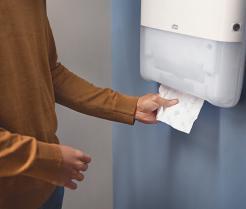
as most other washroom dispensers the company says. The fact the towels are compressed during the production process means they are more compact than standard hand towels.
tions on which products to use in carbon neutral certified dispensers for maximum sustainability. These include systems that help to prevent over-consumption such as the Tork SmartOne toilet paper system and Tork PeakServe hand towels, and products that come in collapsible bottles such as Tork Foam Soaps.
• Hylab hat seinen ersten Autocut-Handtuchspender in weiß vorgestellt, der zu 99 % aus recyceltem Kunststoff (PCR) besteht.
• Das Tork PeakServe EndlosHandtücher-System ist in zwei Größen erhältlich, um allen hochfrequentierten Waschräumen gerecht zu werden.
• Die Spenderreihe ICON von Kimberly-Clark Professional umfasst Modelle für Handtücher, Toilettenpapier und Hautpflege.

The Intro 2nd Life dispenser can accommodate various types and sizes of paper towels through a selection of roll holders. It features a seamlessly integrated window with no gaps, ensuring optimum hygiene. Users also have the option of personalising the dispenser with a branded logo message or design on the cover.
The Tork PeakServe Mini dispenser holds up to 1,230 towels and is particularly suitable for high-traffic washrooms where wall space is at a premium. Both units dispense towels in a continuous loop which removes the risk of jamming. It takes three seconds to take out a towel from the dispenser, while a minimal level of pull-force is required on the part of the user. This means the unit is quick and easy to use which helps to speed up traffic flow and prevent logjams in the washroom.
The dispenser is easy to load and can be topped up at any time to suit the cleaner. Both units are among 27 Tork washroom dispensers to have been certified as carbon neutral.
ClimatePartner projects being supported by Essity include the supply of clean drinking water in Cambodia, the provision of energy-efficient cooking stoves in India and forest protection activities in Indonesia.
www.tork.co.uk
The ICON dispenser collection from Kimberly-Clark Professional is a series of no-touch dispensing systems incorporating models for hand towels, toilet tissue, and skincare products such as soap and sanitiser. This collection aims to enhance hygiene and user experience through minimal contact points and advanced sensor technology.
• Hylab ha presentato il suo primo distributore di asciugamani a taglio automatico realizzato al 99% con plastica riciclata post-consumo (PCR) di colore bianco.
• Il sistema di asciugamani continui Tork PeakServe è disponibile in due misure per soddisfare le esigenze di tutti i bagni ad alta capacità.
• La gamma di dispenser ICON della Kimberly-Clark Professional include modelli per asciugamani, carta igienica e prodotti per la cura della pelle.
Other features include smooth and reliable operation facilitated by an inner pushing mechanism and a smart recharge wheel, which help minimise paper jams and operational downtime. A transparent window allows for monitoring of consumable levels, enabling timely refills and efficient maintenance. The dispenser is also available in a black version made from recycled black post-consumer plastic, combining durability with a classic appearance. www.hylabdispensers.com
The Tork PeakServe Continuous Hand Towel system from Essity is available in two sizes to cater for all high-capacity washrooms. The original Tork PeakServe dispenser holds more than 2,100 towels, which is around two-and-a-half times as many
Essity has reduced carbon emissions for these dispensers by using certified renewable electricity during the production process. It is now offsetting the remaining carbon emissions by investing in certified climate projects with ClimatePartner.
Other certified products besides Tork PeakServe include the Tork SmartOne Toilet Paper Dispenser; the Tork Coreless Midsize toilet paper system and Tork soap dispensers. Essity makes recommenda-

ICON dispensers are designed to provide reliable and hygienic dispensing. The hand towel dispenser features a seamless design with hidden towel mode to minimise contact points and reduce crosscontamination risks. It employs dual sensor technology to detect partially torn sheets and dispense new ones before issues arise, ensuring paper towels are always available.
The dispensers are built using direct drive technology, which offers 150,000 dispenses per battery set and aims for 99.9 per cent jam-free operation. The technology also ensures the dispensers are practically noiseless. There are also changeable designer faceplates for the hand towel and skincare models.
www.kcprofessional.com

To receive ECJ free of charge (subject to qualification), complete the form below.
Please tick just one box in each section.
Your company’s main business activity:
q Factory & industrial premises
q Offices & commercial premises (including banks)
q Contract cleaning/cleaning services
q Distributors/wholesalers
q Health authorities/hospitals/ nursing homes
q Central and local government
Address
q Hotels/catering/recreation (including leisure centres)
q Education establishments (including universities, schools & colleges)
q Other (please specify)
Number of company employees:
Are you personally responsible for purchasing or specifying machinery, materials, products, equipment or support services used in the cleaning and maintenance of non-domestic establishments? q Yes q No
q None of the above.
Web
Please
if

